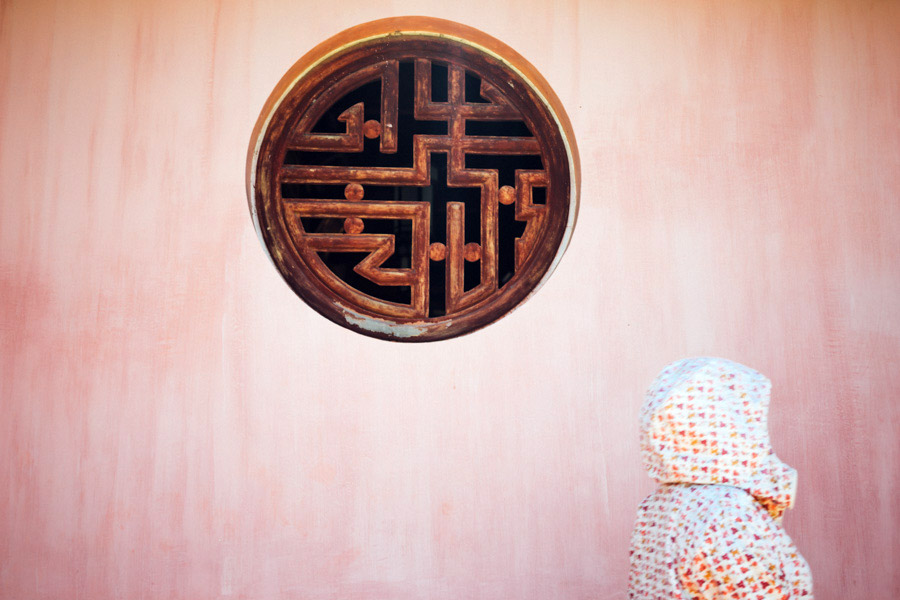Bon Iver - Holocene
Hoi An
We leave Nha Trang at night, hopping on a 10-hour sleeper bus to Hoi An, a small town at the center of Vietnam. The bus departs full and adds a few passengers along the way, all of whom will be laying on the floor between the aisles. Madie and I have top bunks, semi-beds, too short for me but still better than the Philippines. We arrive at 7am, groggy, ignore the many taxi drivers trying to get a hold of our bags, and start heading toward our guesthouse; there’s nothing like a nice early morning walk. With a few hours until check-in, we go out for a cup of rich Vietnamese coffee, pâté, eggs and bread. Gosh, I missed coffee until we got to Vietnam.
We walk aimlessly with no one else on the road but, perhaps, the other travelers waiting for their rooms. Hoi An, the Venice of Vietnam, is a must stop for anyone venturing south of Hanoi. But for us, it is a meeting point we’re overly eager to reach, the place we meet Joe.
He’s joining us from the Philippines. And as food lovers traveling together, what better place to be than Vietnam. Hoi An greets us with eye-catching scenes and mouth-watering food: the old houses with dark wooden panels giving the real character of the town; the bright red Chinese dynasty temples and intricate mosaic dragons, venerating generals instead of religious figures; the local dishes, Cao Lau, Bánh Xèo (first of many) and the succulent Bánh Bèo Chén; the pedestrian walkways and river, illuminated by the many colorful lanterns; the market of produce, meats and noodles, close to Bourdain's favorite Bánh Mì (which we’ll double down on); an old school shave for Joe at the local barber (it’ll take a little more to take my beard away - it took 33 years to get there).
The old Japanese bridge is the main attraction, even though no one remembers why it’s there. We indulge on many Vietnamese iced coffees, small desserts, and passion fruit juices. We get lost and trespass trying to find the local theater currently on holiday, only to find the drummer practicing in the back, and wash it all down with the cheapest beer we find, at a mere 3000 VND ($0.13) a pint. After a few too many glasses, we come across a community house and temple at the edge of the old town. The old gatekeeper was done for the day but is happy to give us a last tour under the light rain, contributing to the eerie feel of the place, a bare bone structure honoring another Chinese dynasty. The place is simple and peaceful but his stories make it feel more magical; we even get to hit the drum with the old man’s help on the proper rhythm.
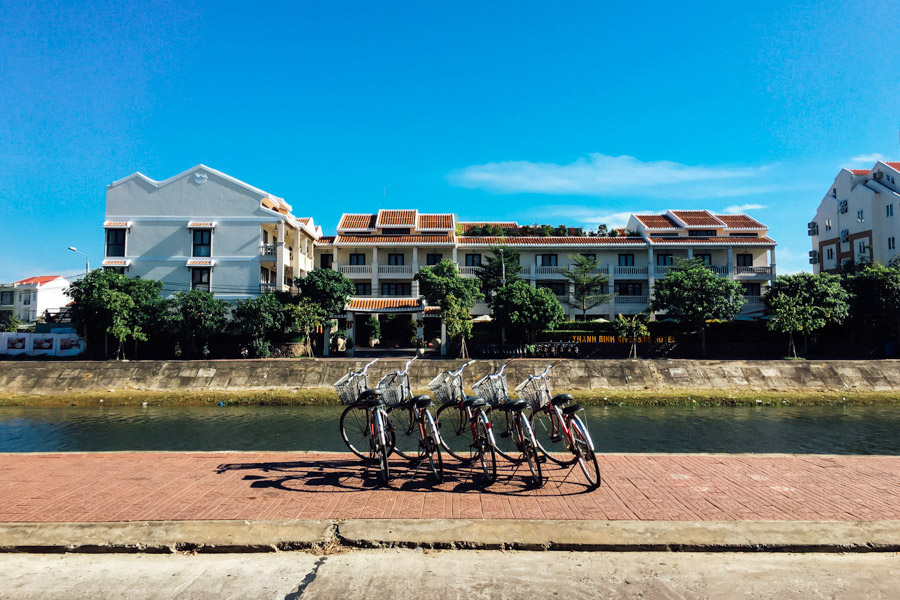
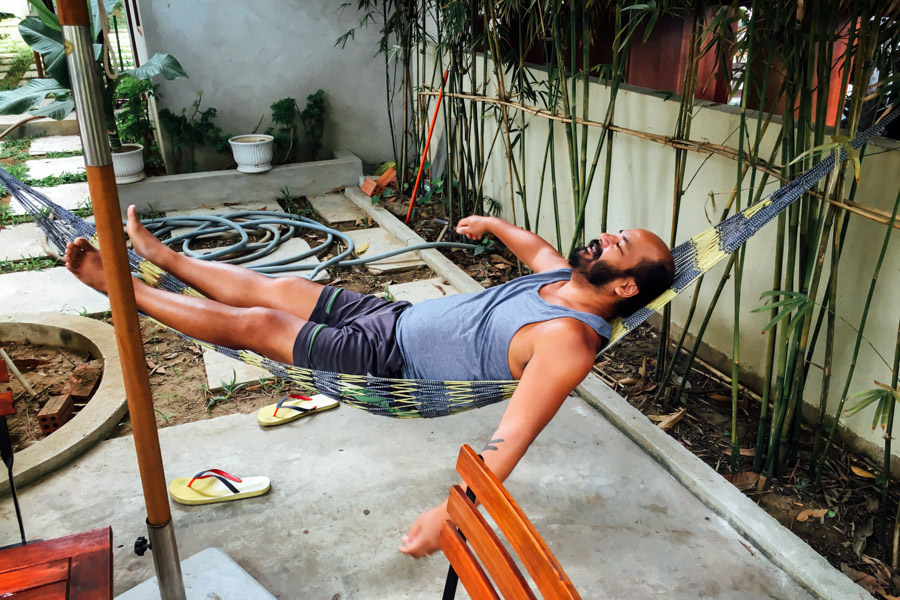
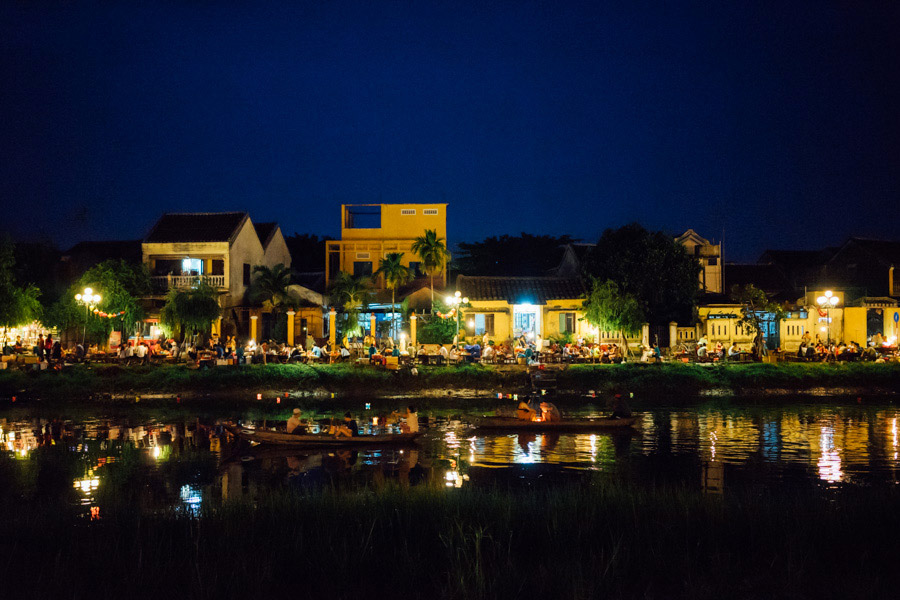
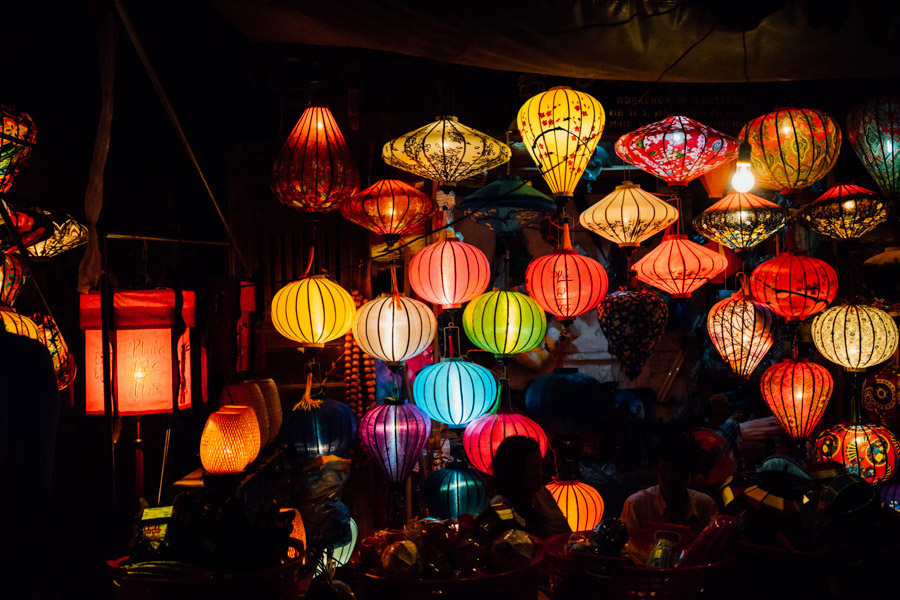
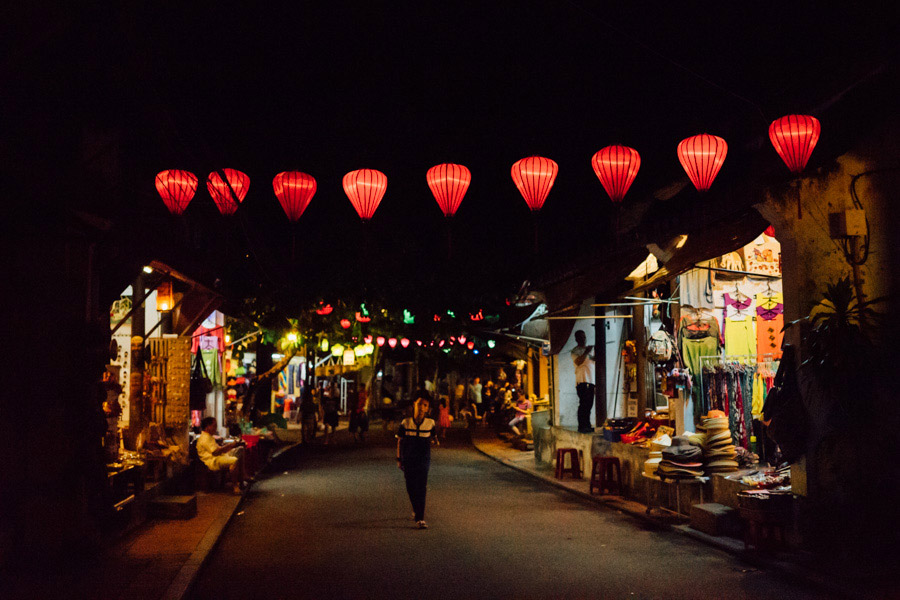


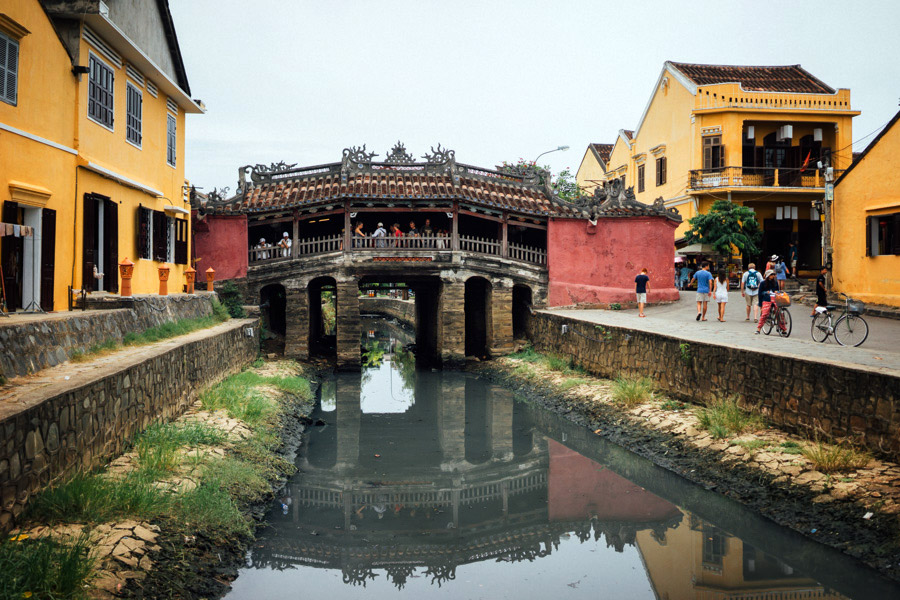

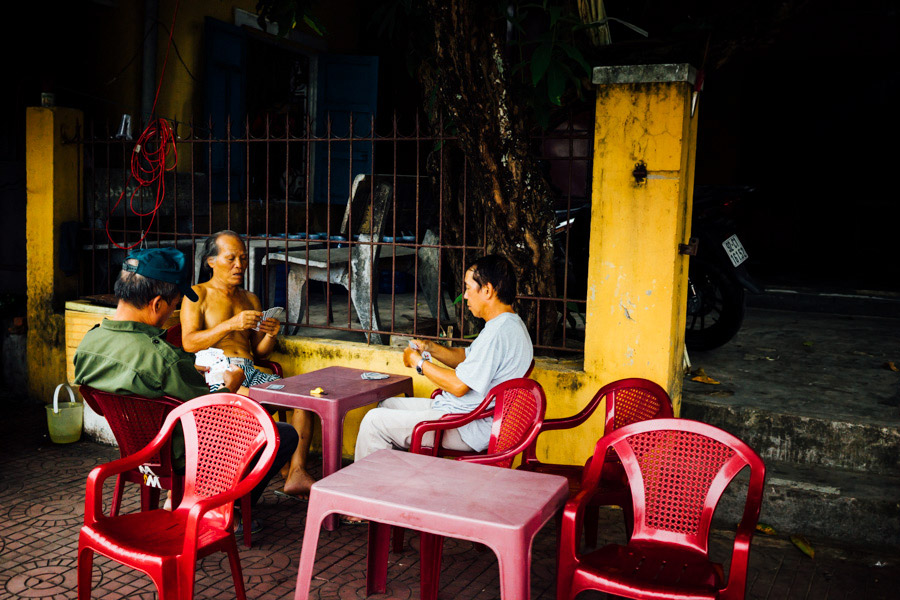
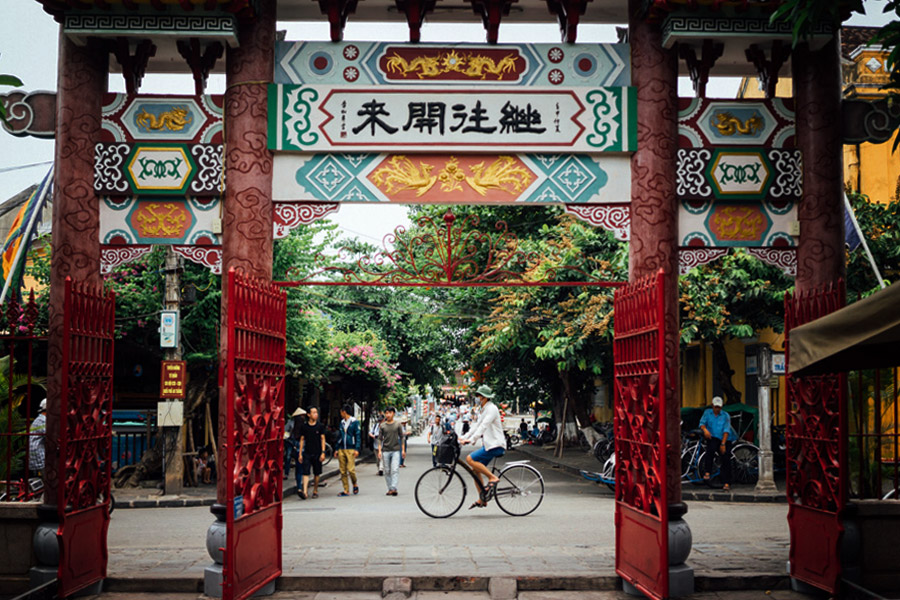
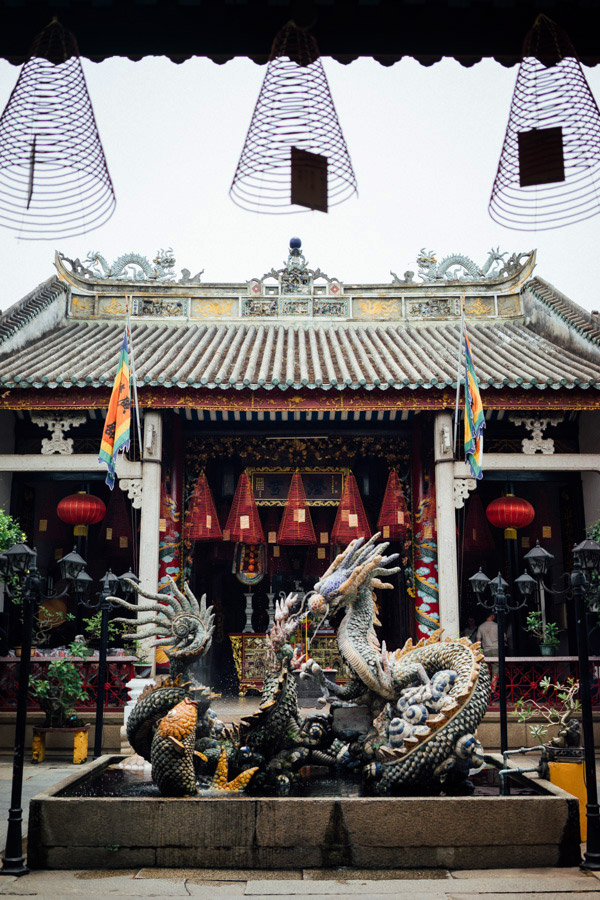
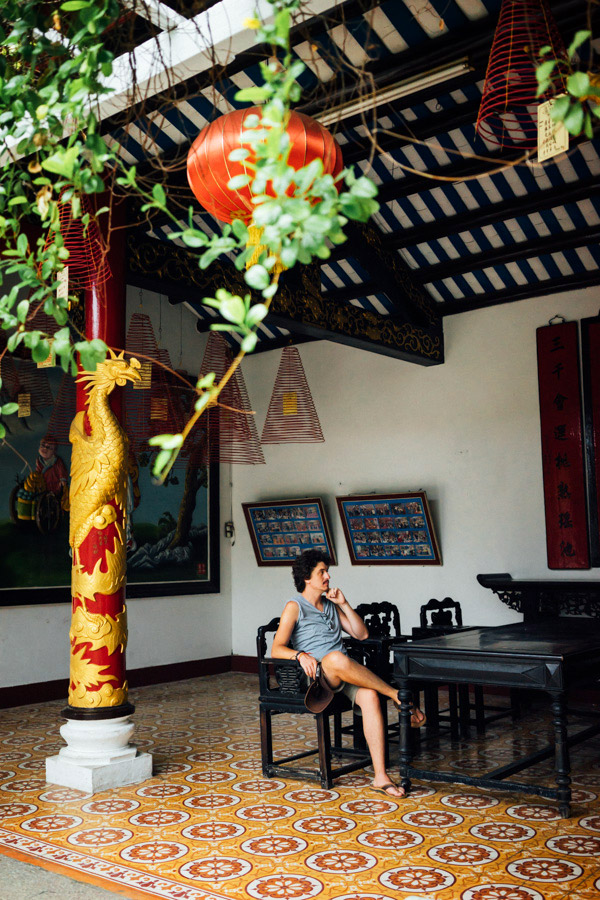
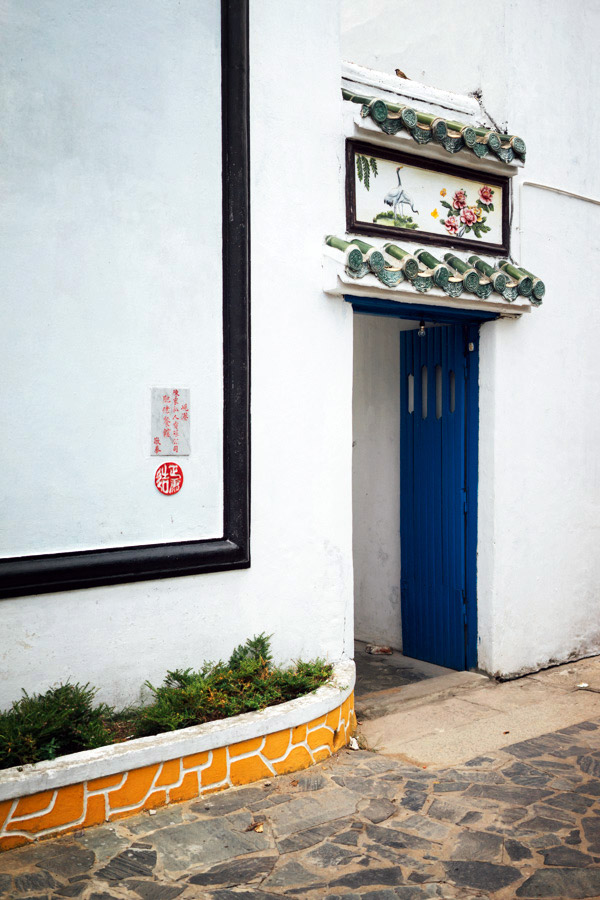
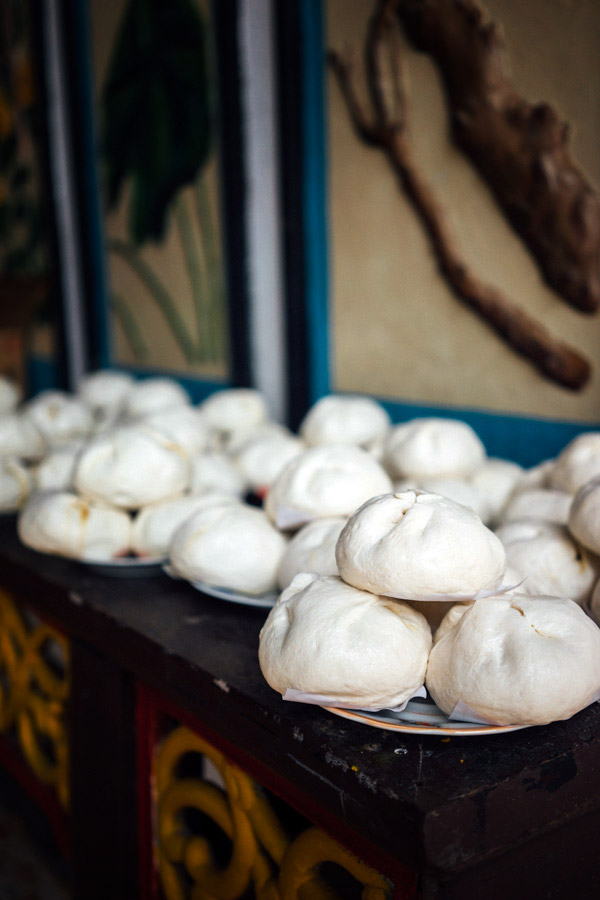

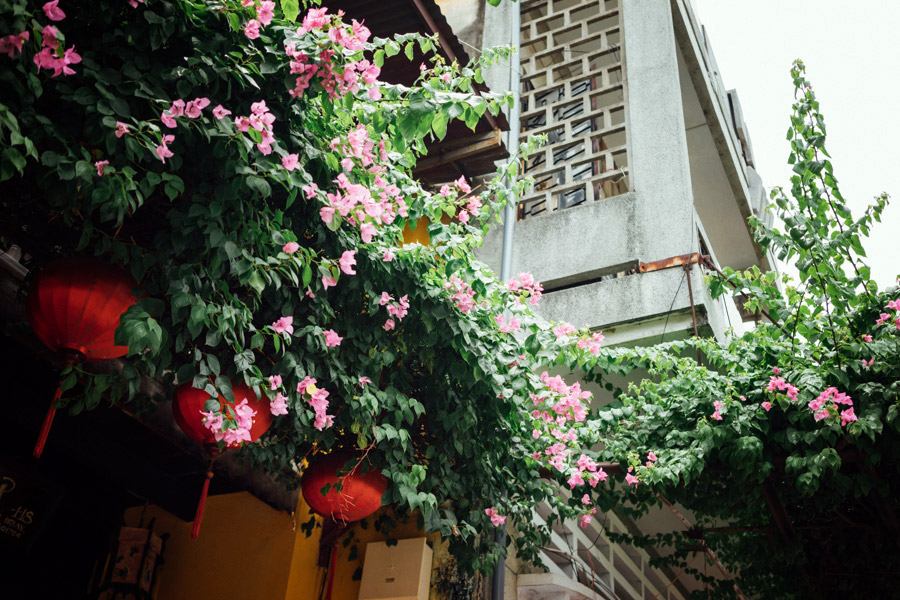
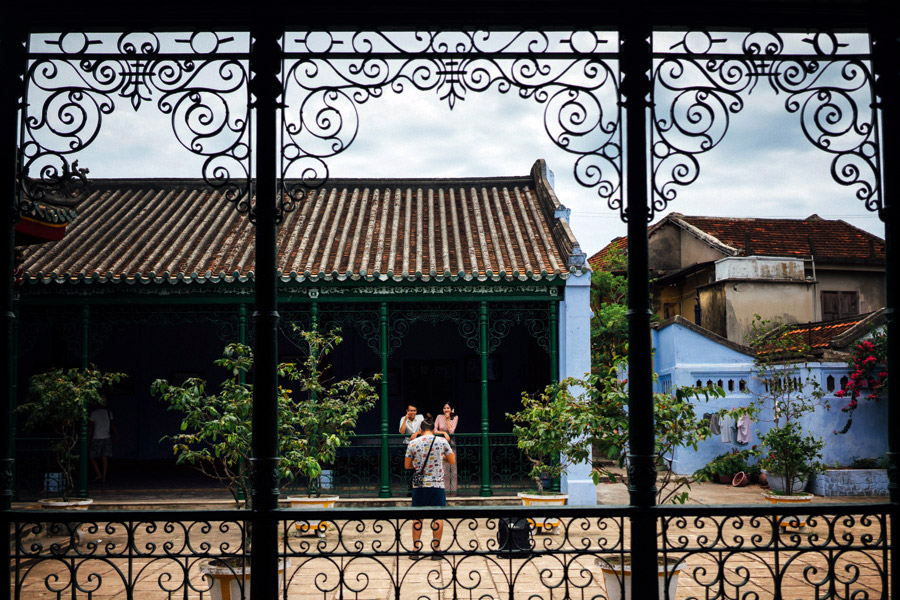
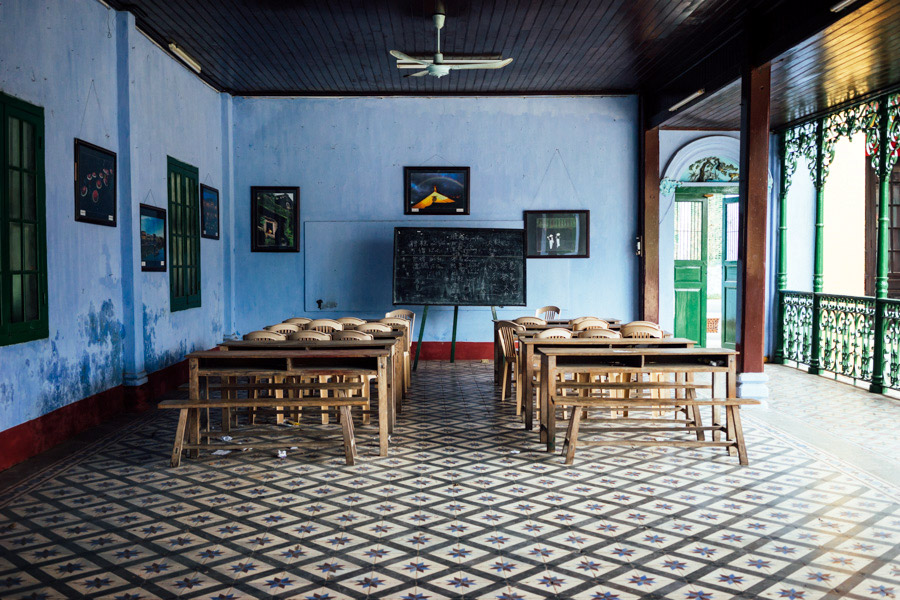
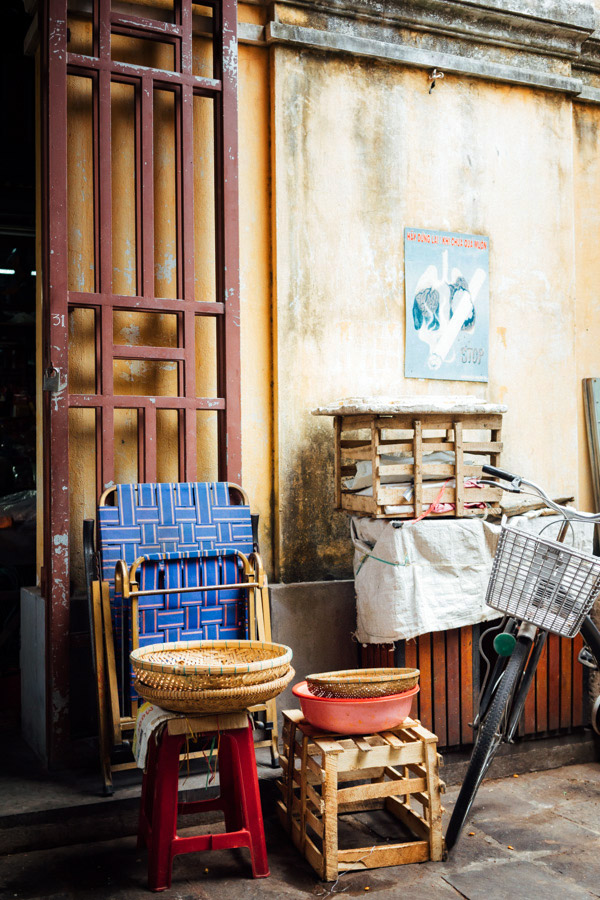
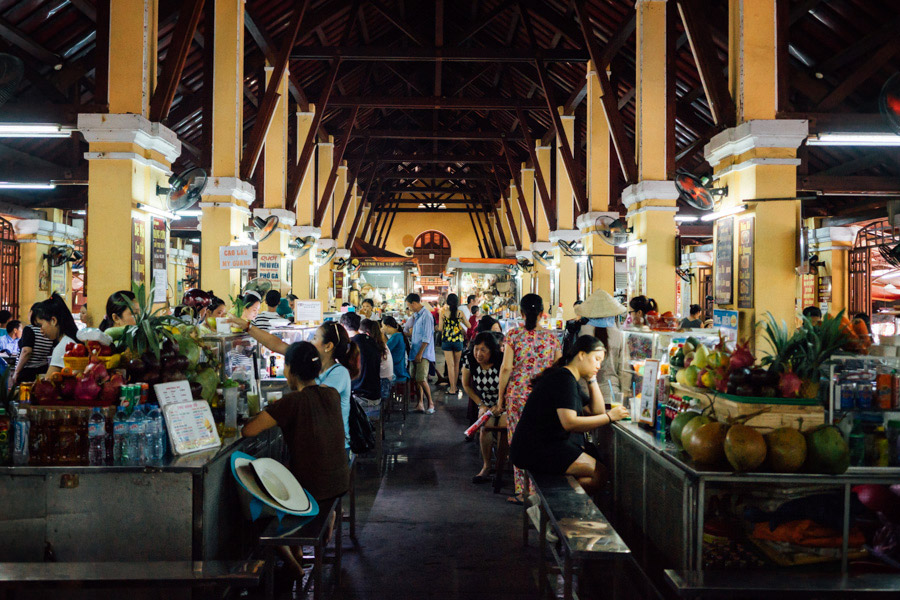
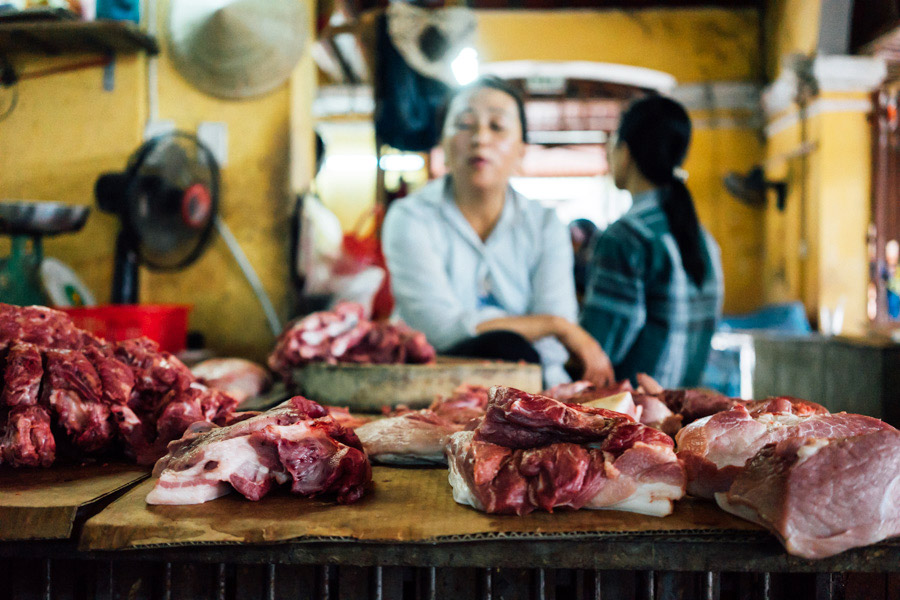
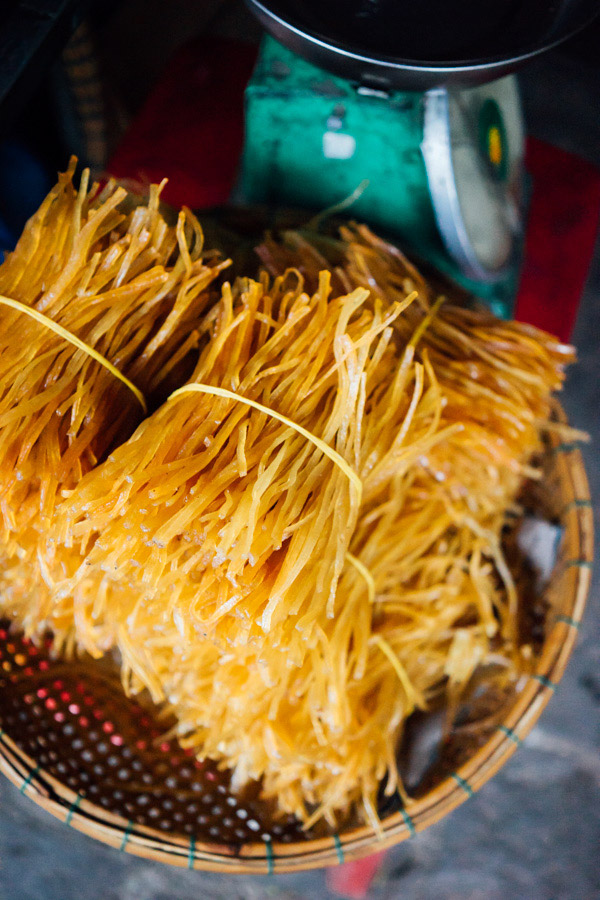
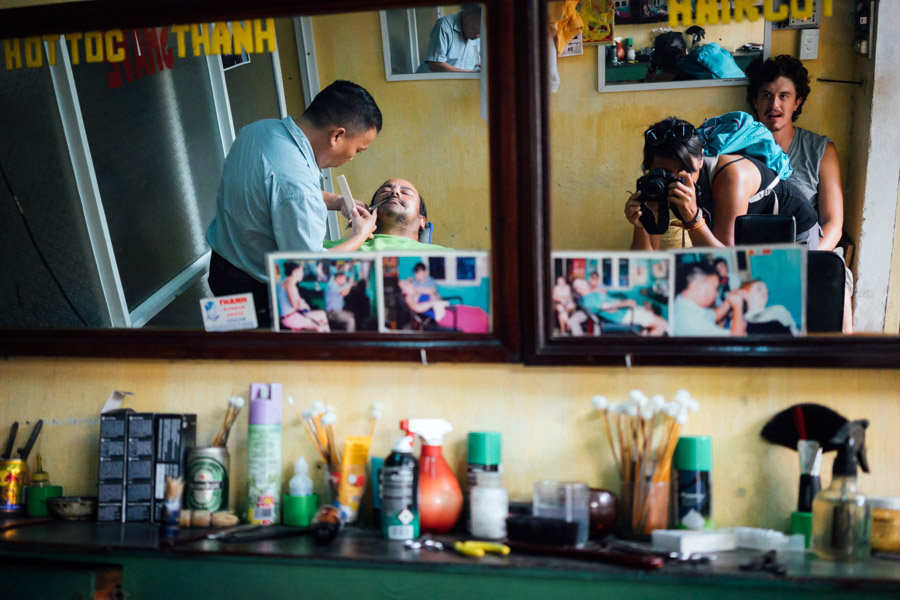
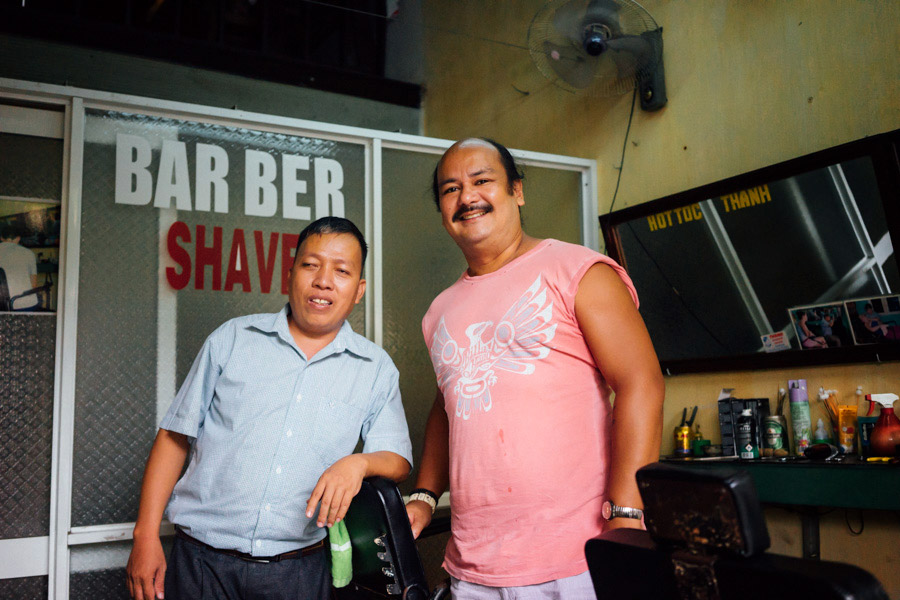
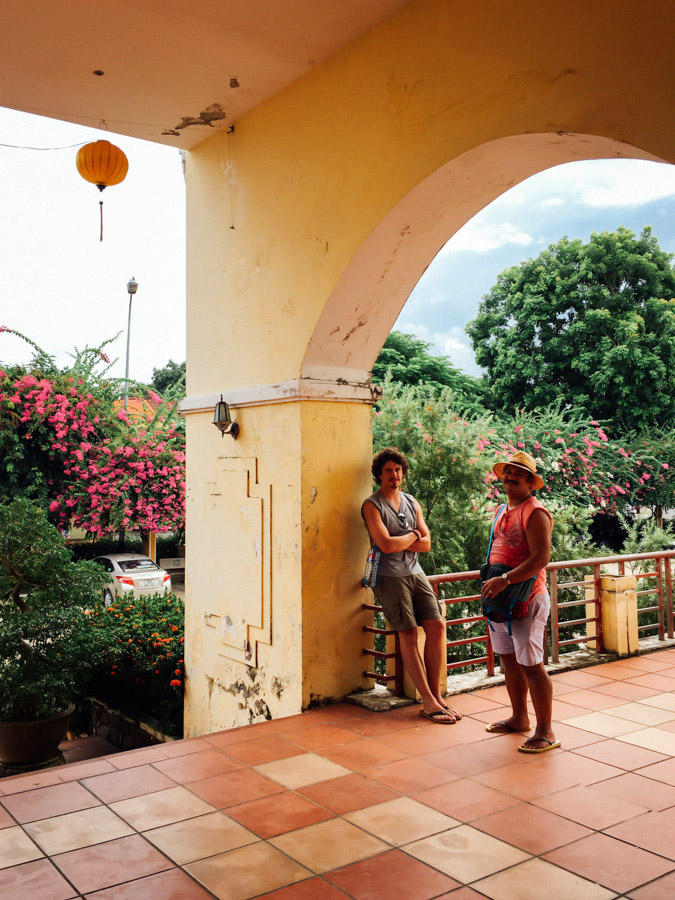
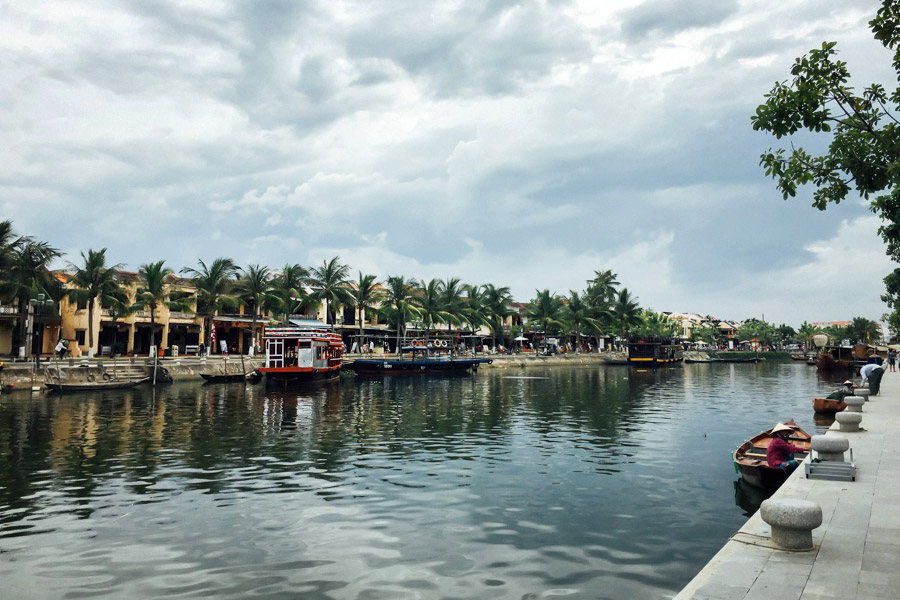
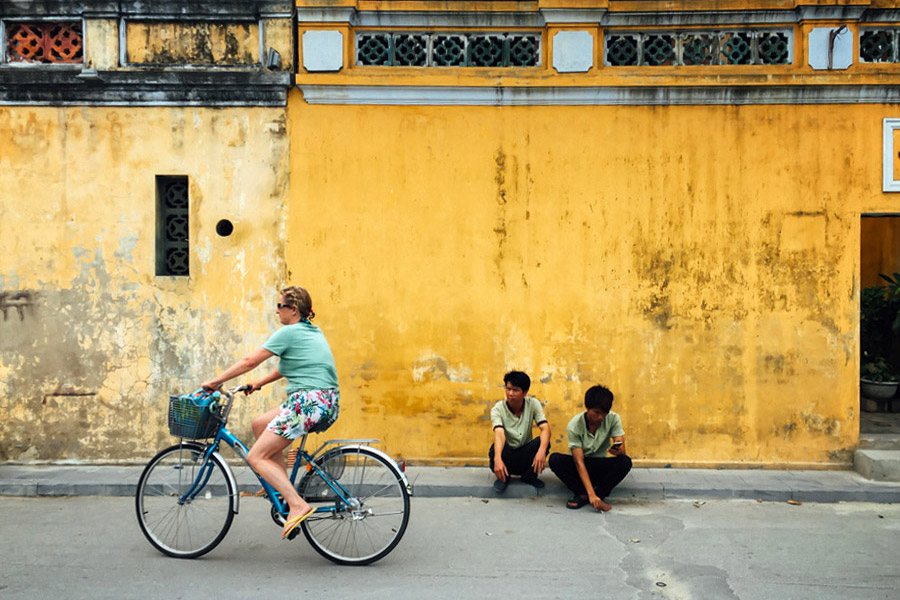
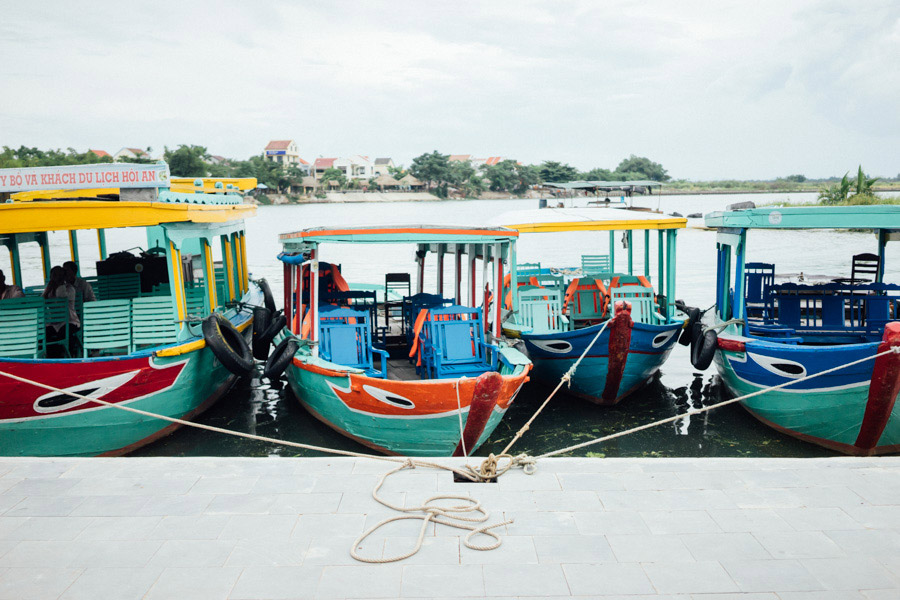
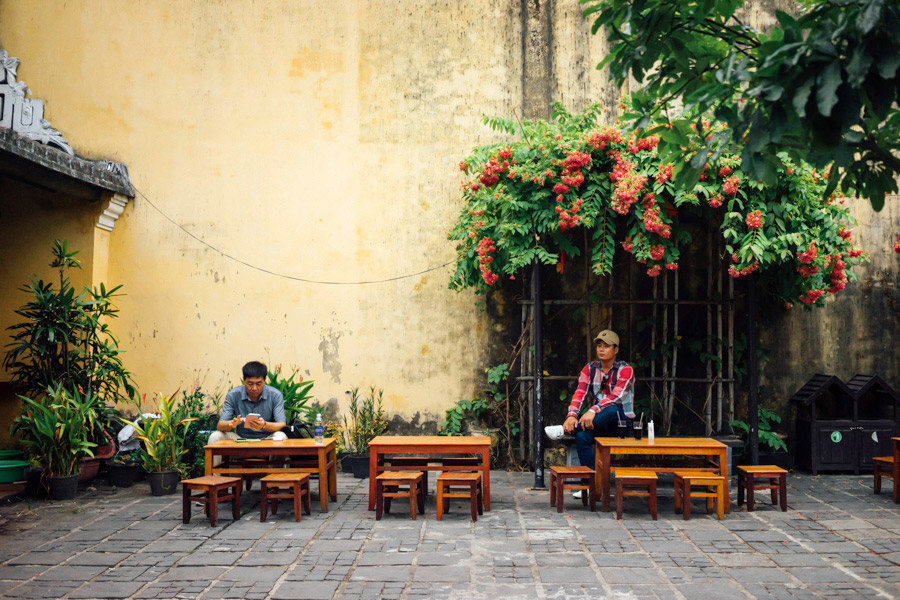

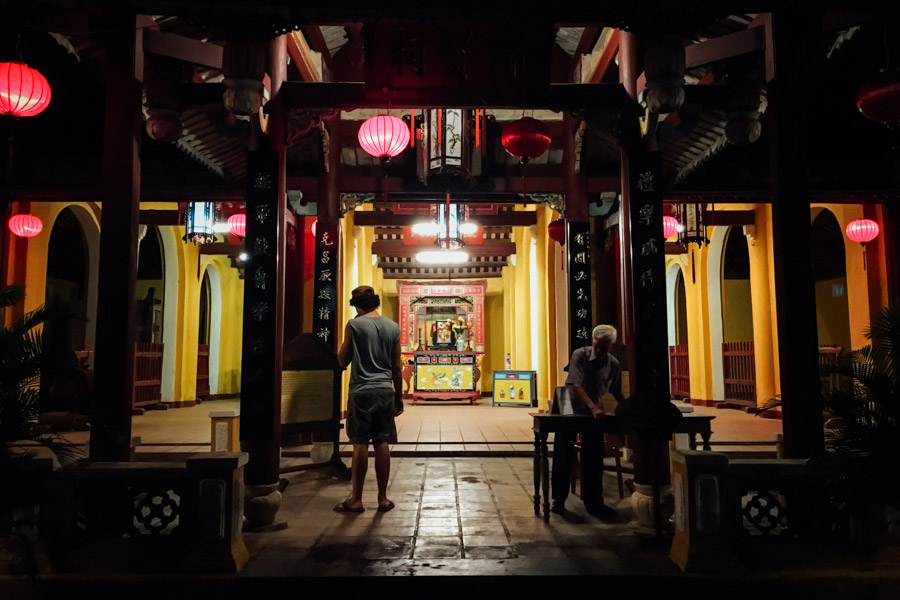
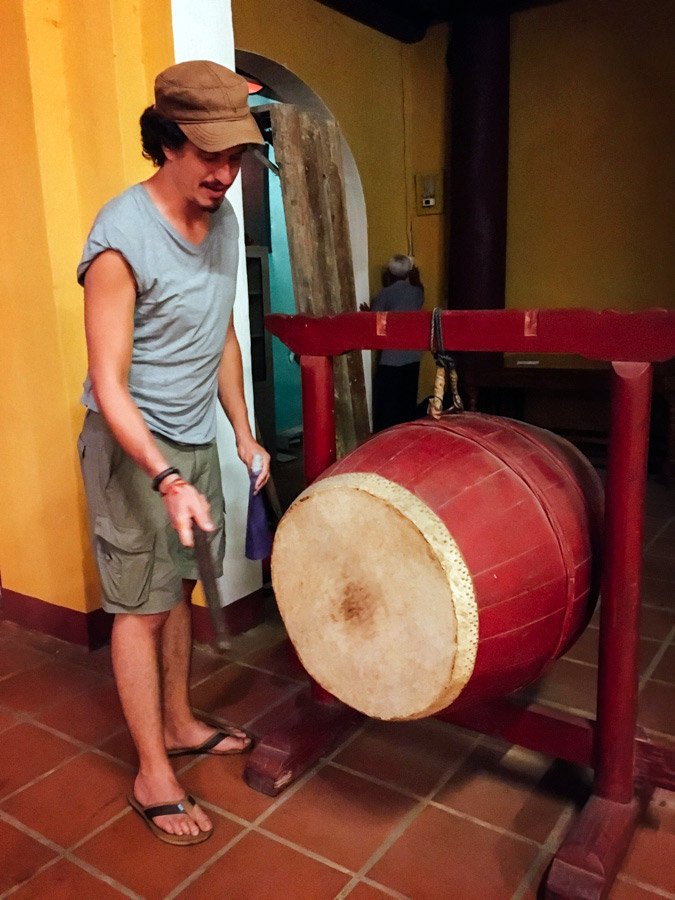
Huế
A small shuttle takes us to Huế, stopping by the Marble Mountains with temples built on top as if carved into it. The cave holds a large Buddha, overlooking us and the flood of Chinese families and groups of friends, giving Joe his first experience of the infamous tourist bus. But it’s Huế we’re most excited about. Upon arrival, I eat my first bowl of Bún Bò Huế, the local bowl of noodles with a lemongrass note.
Huế was the capital of Vietnam during the Nguyen dynasty, with the large Imperial City now well restored; it also holds a collection of tombs and pagodas unrivaled throughout the rest of the country. The Perfume River that crosses the city is known for a peculiar flowery smell, which we all make a story up for: something related to a princess (Joe’s), a former trading post (mine) or a natural phenomenon (Madie). Whichever it really is, we liked the princess story best.
Aboard an extravagant boat with two dragon heads and plastic chair seats, we embark on a day of visits around town. We start in the Thiên Mụ Pagoda and walk along its monastery. The place is simply beautiful, set atop a hill overlooking the river and surrounded with pine trees reminding me of the south of France; children are setting the table for the community lunch and last meal of the day. The famous picture of the burning monk is displayed above an old car, as a memorandum of the monk who lived there, drove to Saigon and lit himself on fire in 1963 to protest the Diem Regime persecuting Buddhism (see Wikipedia: Thich Quang Duc).
The dragons take us to two royal tombs, with drastically different styles. The first is the tomb of Minh Mang, second emperor of the Nguyen dynasty, and who allegedly had around 400 wives and concubines (mah man...). Built in 1840, the tomb is actually a large architectural complex of pavilions, palaces, temples, moats and ponds, set harmoniously in the forest. It is entirely symmetric, creating a calm and enchanting park where we could stroll for hours. And as friends go, the best thing we think of is tasting a glass of sugar cane juice. The second is the tomb of Khải Định, twelfth King of the Nguyen dynasty reigning until his death in 1925. Despite being unpopular with the Vietnamese people for being too obedient with the French, his tomb is one of the most elaborate, combining ancient and new architectural styles evoking old French castles.
Exhausted by the heat and the many visits, we decide to come back to do what we do best: eat. We introduce Joe to Nem Nướng, and the weird fishy herb, adding imperial rolls and Bánh Bèo. We finish the night with a tiny food stall under a bridge serving Chè, the delicious dessert found in many Southeast Asian countries (Halo Halo in Philippines, Mix Mix in Malaysia, Baobing in Taiwan): shaved or crushed ice, sweet or coconut milk, and as many toppings as you can fit in a bowl. As always Vietnam’s Little Red Plastic Stool doesn’t disappoint.
I’m happy to convince them the next morning of a real Vietnamese breakfast - the one they serve at the food stall on the corner of the street with the same colored stools. We all order Bún Bò Huế and leave our bellies full and happy to visit the immense Imperial City of 1000 acres. Despite being bombed multiple times, the palace complex has been restored and is now open for all to visit. The large moat and ramparts immediately give a threatening feel to the place. We venture through the Emperor’s mother's house, his mother-in-law’s, and walk in the fields that hosted the many concubines (not yet restored). As in Chinese tradition, the city was called the Purple Forbidden City and only those allowed by the emperor could enter; eunuchs were the only ones to see the many concubines (yikes). The many houses and quarters will get us lost multiple times, eventually finding our way out, exhausted and (already) hungry. Nem Nướng, Bánh Bèo, and Bún Thịt Nướng it is.
If Hoi An took our hearts, Huế took our bellies. As we get to the train station we’re jolly about boarding an old night train together. Failing to pre-book dinner service, we survive on Hanoi beers, a pack of Pringles, and nuts. We’ve eaten enough for a few extra days anyway.
Hanoi
Hanoi greets us at 5:30am - already with sweat and heat. The place is busier, but the streets are large and sidewalks are left to people walking, unlike Saigon. The architecture and buildings remind us of Paris, or maybe Lyon - we all get nostalgic of home, and of France also. We walk around the neighborhood, avoiding the many scams of free donuts and sandal repairs - it is Vietnam after all. The Hoàn Kiếm Lake, close to the old town, is a busy crossroad where KFC, Burger King, and Korean dessert companies meet the local shops. We’re accosted by a group of students. Although reticent at first (and waiting for another scam), we understand they only want to talk and practice their English. Thirty minutes (and a few new Facebook friends) later we finally head to the hotel, ready to crash and watch TV for once.
But Hanoi will be a different place for us. A busier city, with too many cars and scooters for us to feel too comfortable, and a night market unbearably loud and crowded. We visit the Women’s Museum (Madie’s favorite), take note of the traditional fashion and blackened betelnut-stained teeth and oblige to Joe’s favorite hobby: going to the movies. We even eat Belgian food nearby an old church right out of a small French town. At night, the quirky water puppet show will tell us the story of the lake. We hunt for the best Bánh Mìs and find the delicious Bún Chả, a noodle soup with a sweet broth accompanied with ground meat and Nem - and discover that the photo of Bourdain and Obama is in a nearby restaurant. Another round of Chè will finish the job - the puppies were just extra icing on the shaved ice.
Hanoi is also home to the Ho Chi Minh Mausoleum, set in breathtaking propaganda. Walking there, we pass by the heart of the Communist Party, a succession of luxurious houses similar to French bourgeoisie. As we walk amongst them, I can’t help but recall the words of Tintin, our Easy Rider from Da Lat: all the money gathered by the Communist Party is to empower themselves and live in luxury while most of the rest of the country is at despair (swear words not included). Near the mausoleum, we have to take a long detour along a patch of grass protected by guards; even though we see the entrance nearby, we will walk 10 minutes around houses to not disturb the scenery. If there’s one thing Communism knows well, it’s how to look epic. Red flags surround an almost empty square; the mausoleum threateningly overlooks the area; A single line is formed to visit Ho Chi Minh’s corpse. We head in line together and are being asked to hand over our cameras and phones (hence why we have no pictures); the few who sneak them in are quickly scolded when attempting to take pictures of the guard. The visit to the corpse of Ho Chi Minh is made in a long procession, in complete silence. His corpse is in a glass rectangle protected by four guards and illuminated on all sides, almost hologram-like; above him, a large hammer and scythe overlooks everyone menacingly. Outside the mausoleum is a park, adorned with a giant screen showing a concert of the Communist Party, traditional songs celebrating Ho Chi Minh and other figures. We want to exit but are forced through a park we don’t want to pay for. Finally out, we are all in different states of shock. For me, there is also fascination. I never imagined such effort for the image of a party - not a religion, a country or even a philosophy, but a political ideology that took power and is now imprinting its mark on generations. It was an unforgettable experience. As Tintin put it: “There is no religion here. The only one allowed is Communism.”
To be fair, I do not know enough of the accomplishments of Ho Chi Minh and I’m not one to venerate religious figures either, whether they be Christian or other. What truly shocked me is the imposed belief of a political choice, the lack of freedom of thought and speech. Until this visit, I did not understand how much certain fundamentals of the Western world were so important for basic human rights: the simple power of freedom of expression. And it became difficult for me to imagine how a population can escape from it.
But maybe I’m simply underestimating the power of a new generation, especially in the times of social media when information is a lot more difficult to control. As I write this, Bourdain just published his piece on Hanoi, and where he had lunch with the President, and skillfully writes:
“I cannot possibly overstate the warmth with which he [Obama] was received by the Vietnamese — particularly the young ones — who were not even alive during the war years, for whom America appears a far, far more attractive (and less threatening) model than China. Vietnam may still be a communist country. But you can hardly tell from the streets. Money flows in and out in a raucous, free-market scrum of Western brands and materialistic expectations. Buildings are going up everywhere, private enterprise having long ago outpaced ideology. As in Cuba, the toothpaste is out of the tube. And there’s no putting it back.”
So what do Joe, Madie and I do? Well, we go to a pub for dinner - with decadent burgers and a happy hour making sure we drink a little too much. We spend the last hours being happy together before he has to leave for his plane back to the Philippines. Justin Vernon gave a meaning of the song attached to this post: “Places are times and people are places and times are people.” Hoi An, Huế, and Hanoi were first and foremost a place and a time we spent with our dear friend Joe. Now, it’s only Madie and me again. It‘s been four months on the road now. We’ve changed already, maybe, but we still have a way to go.


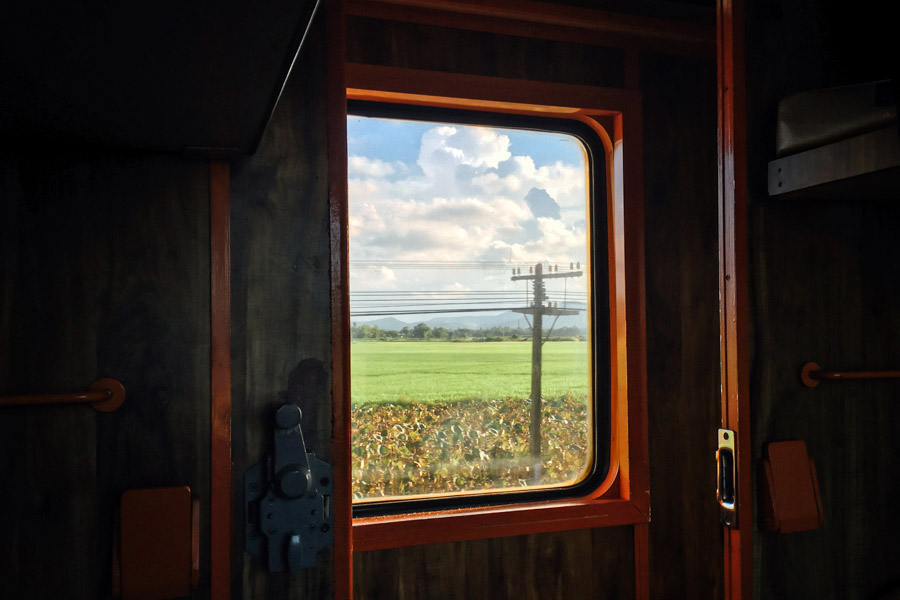
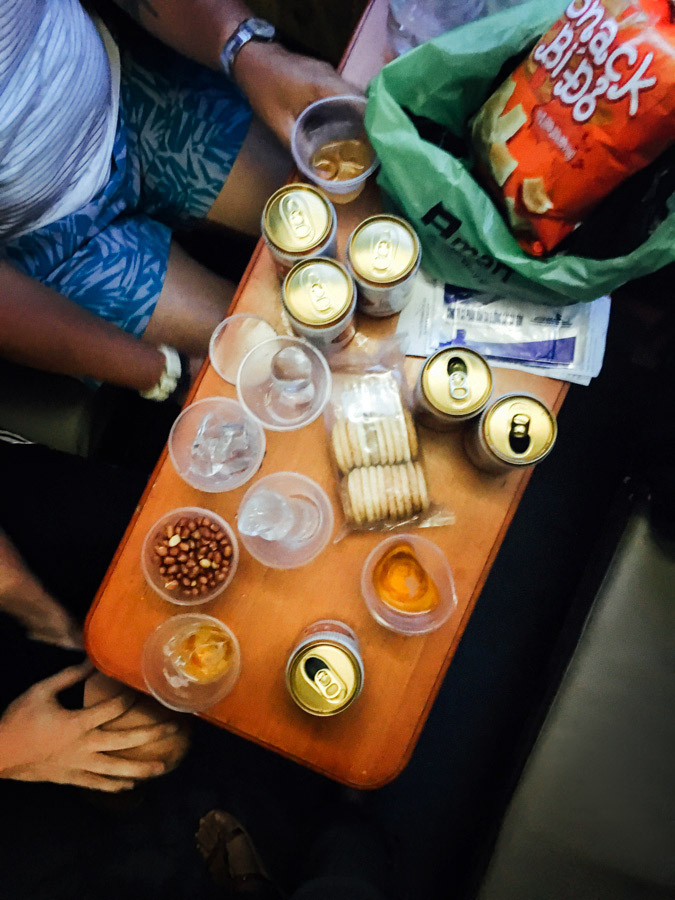
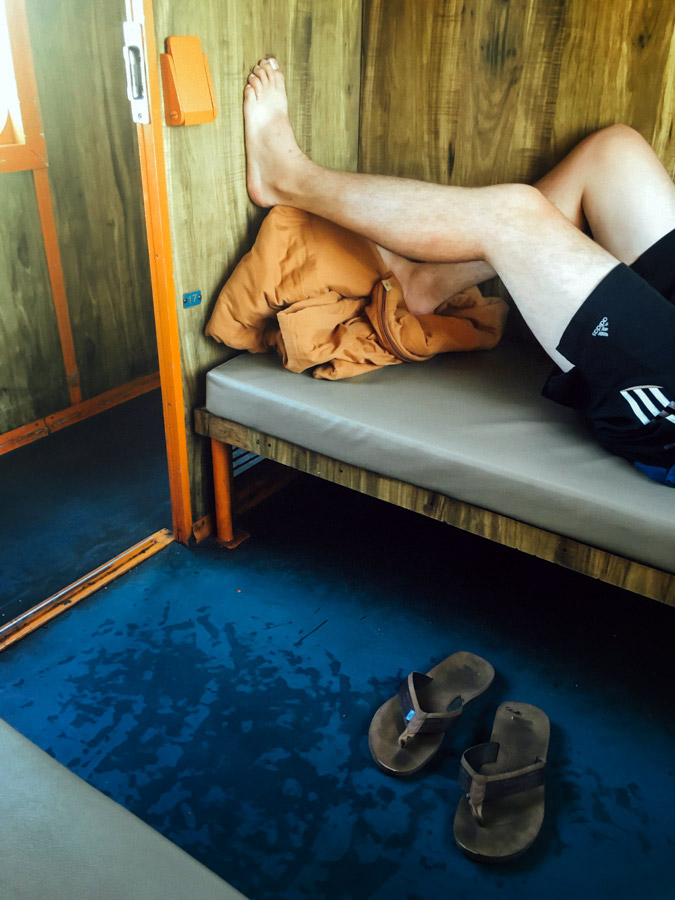

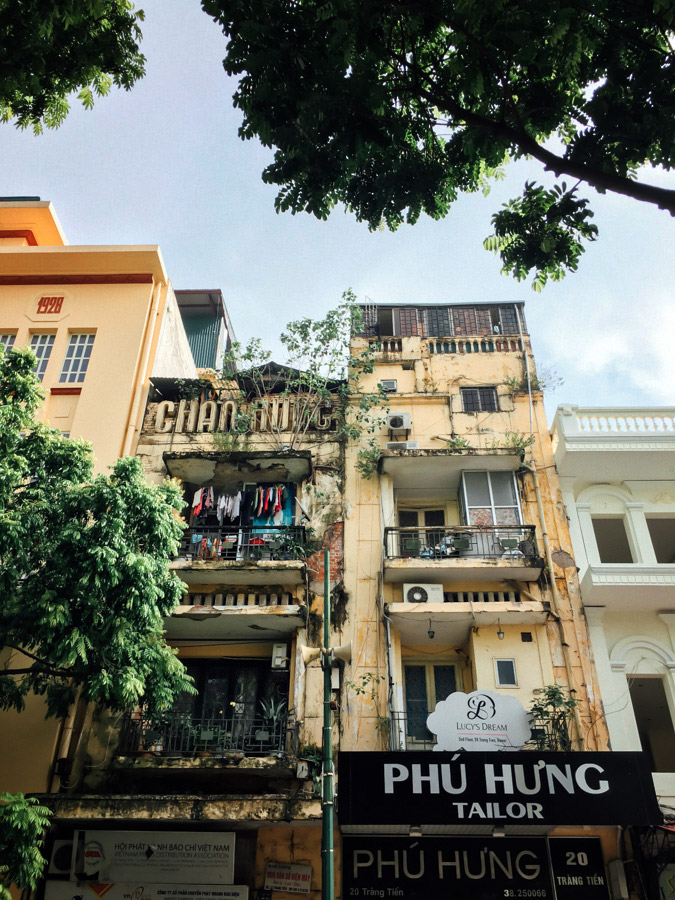
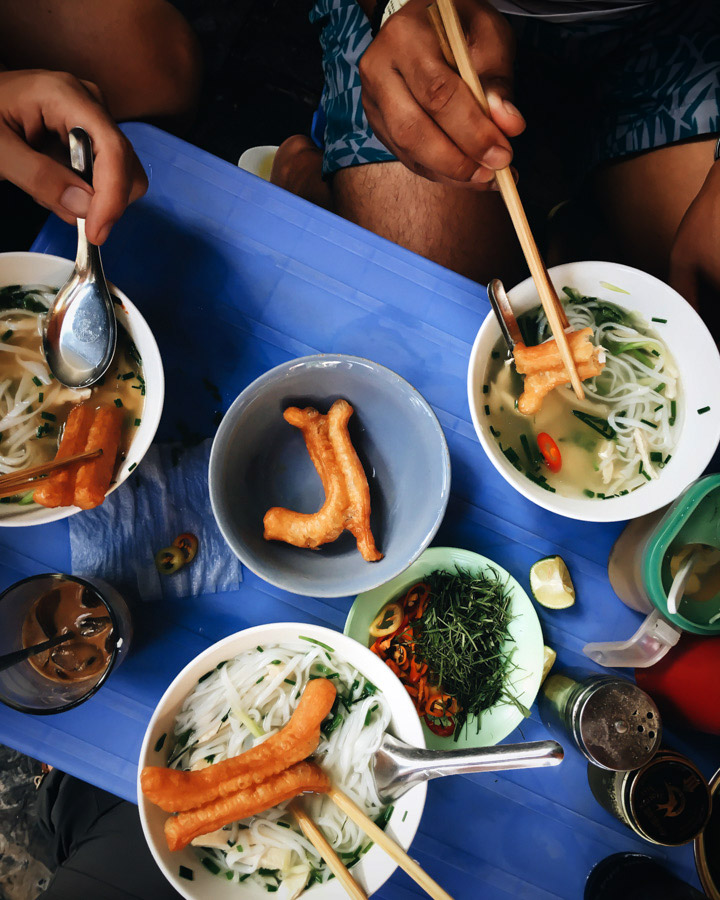

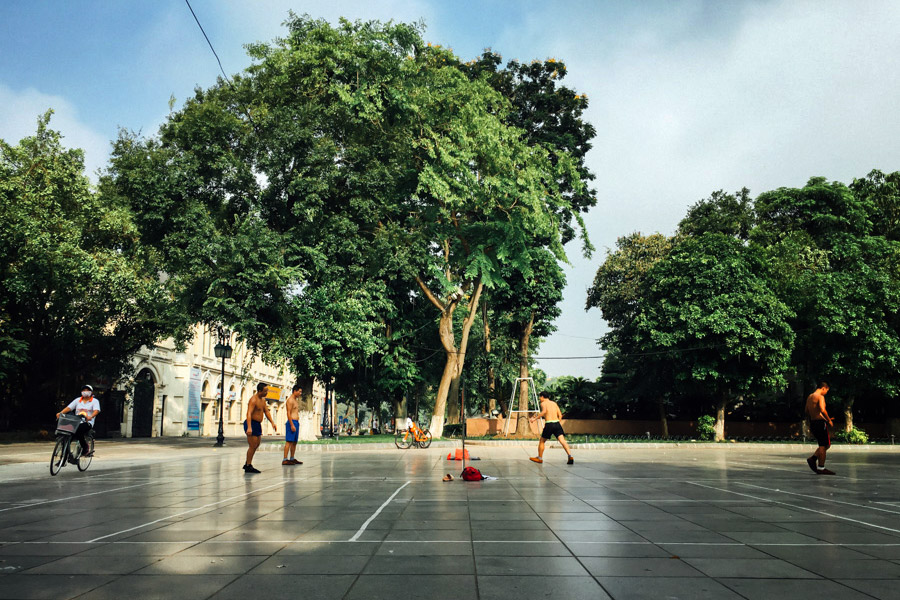

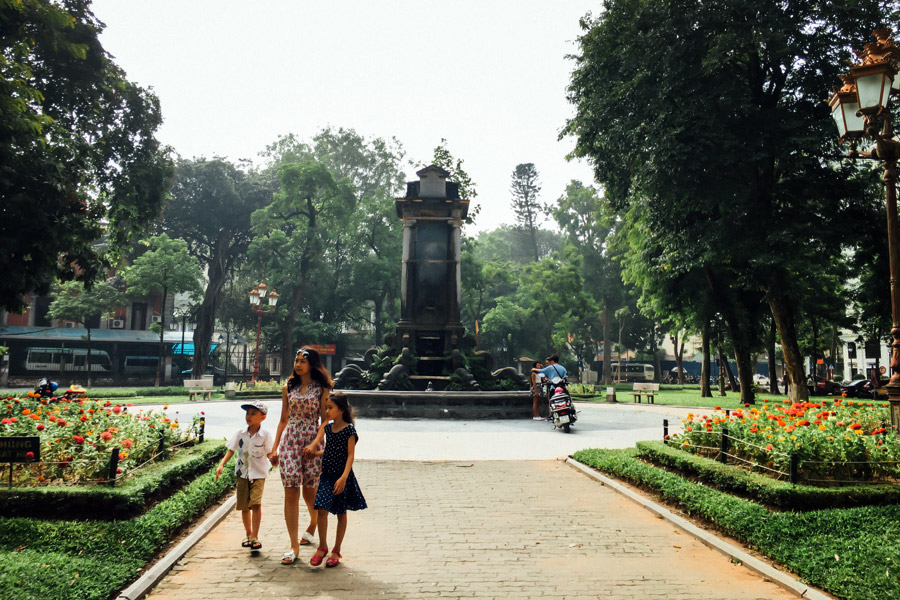
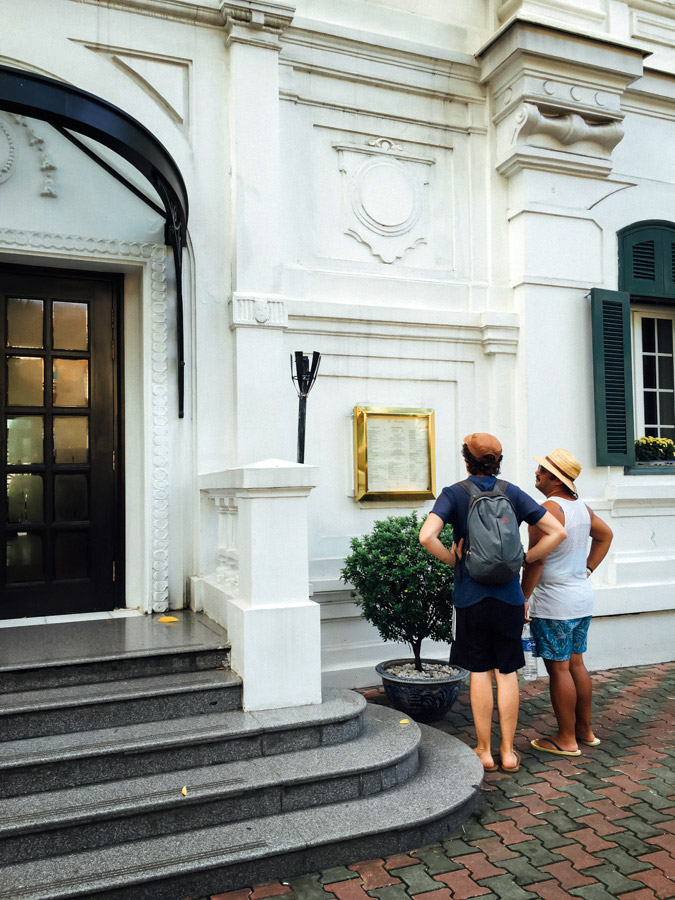
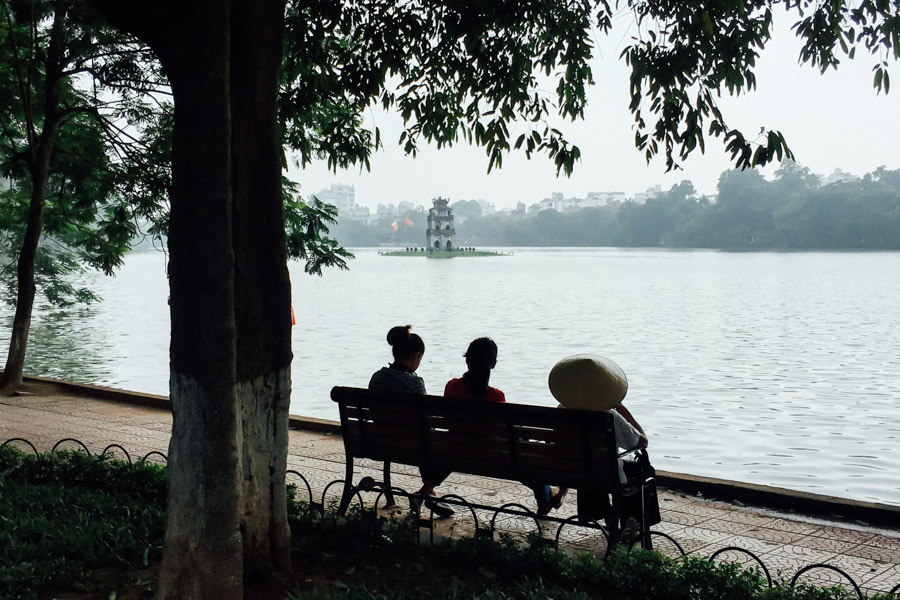
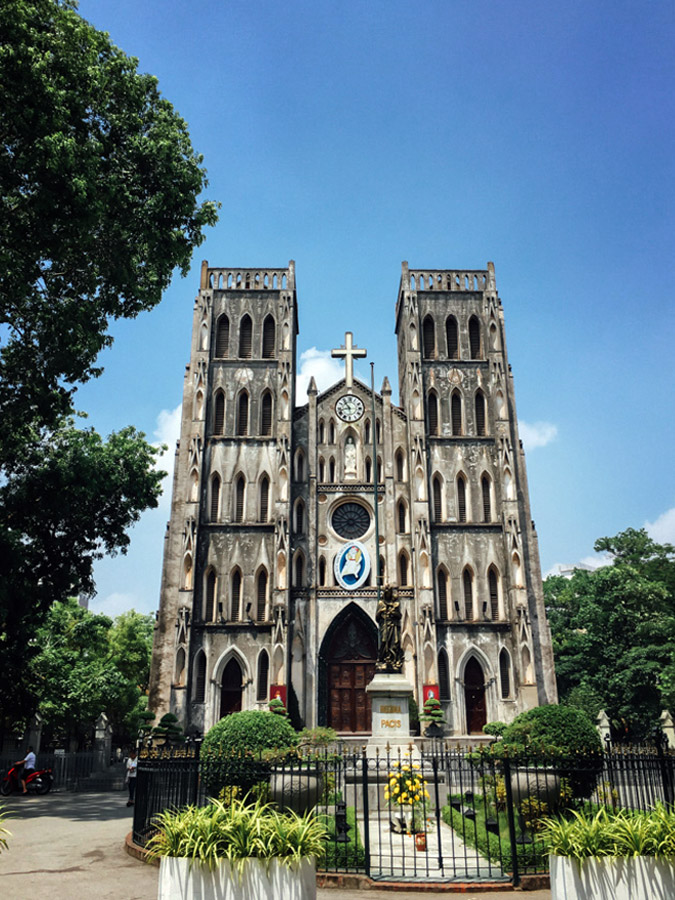
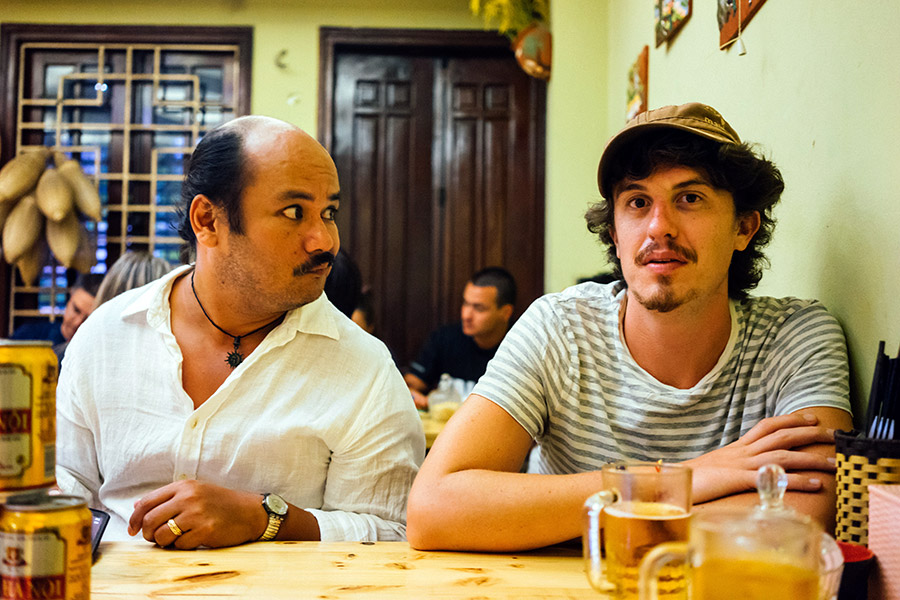
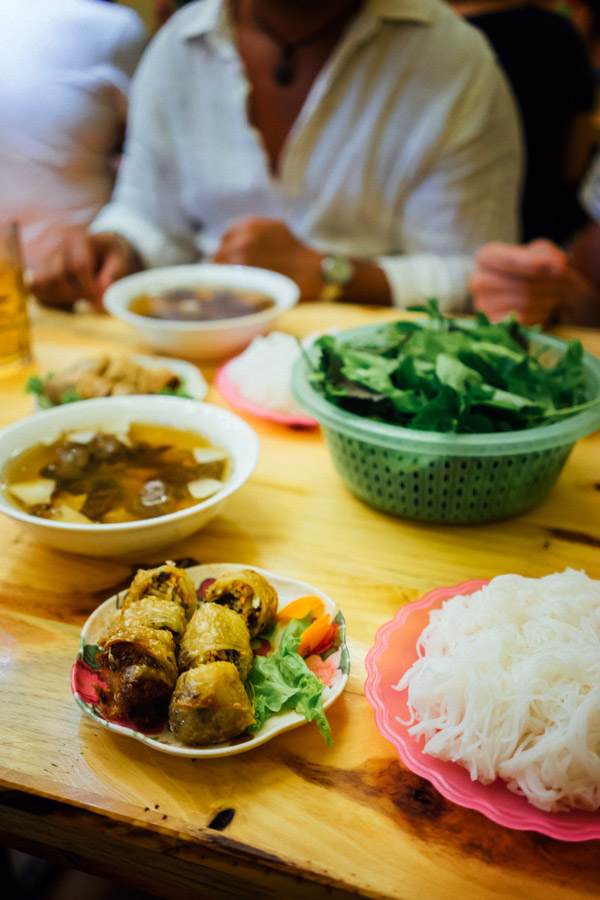
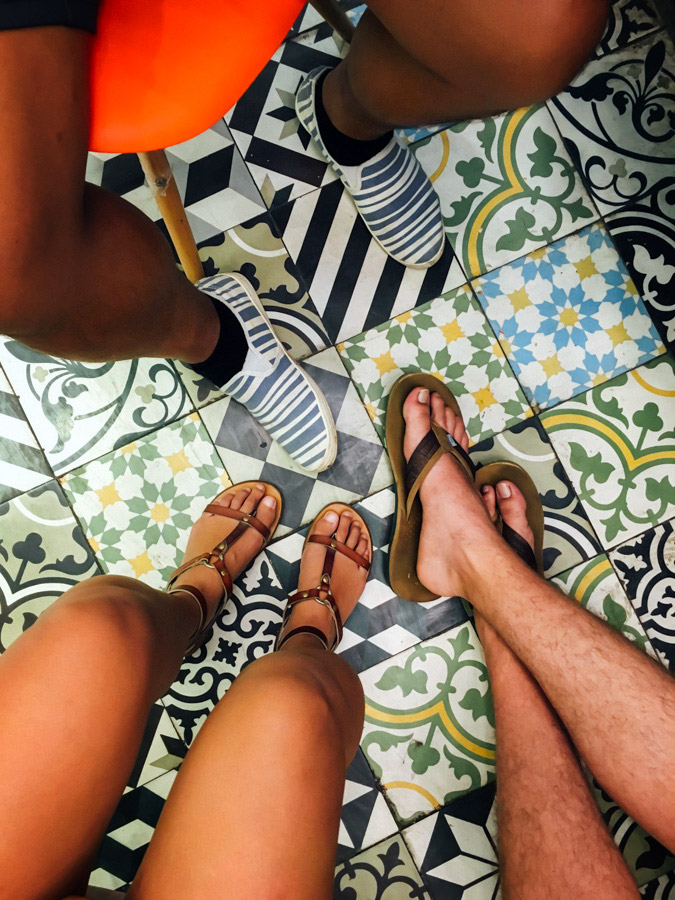
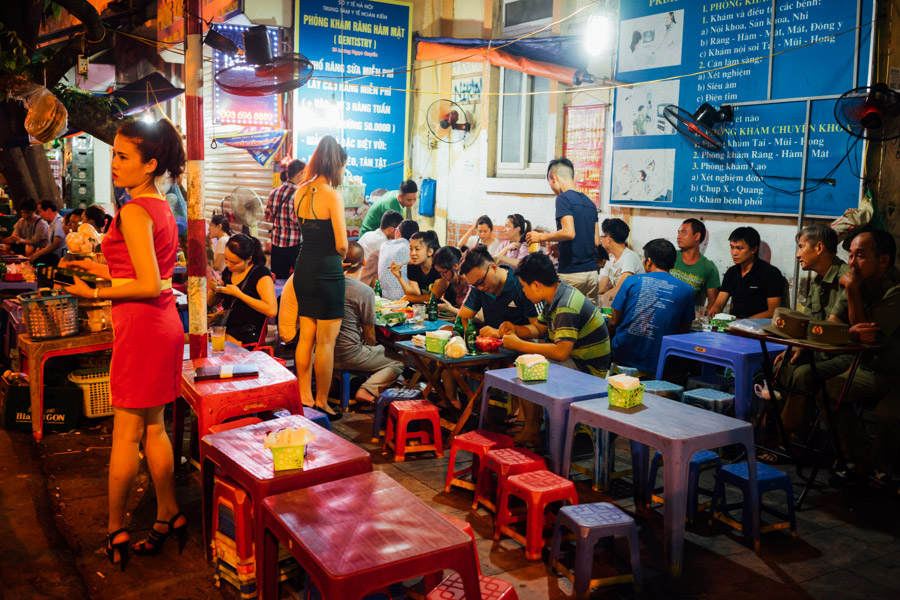

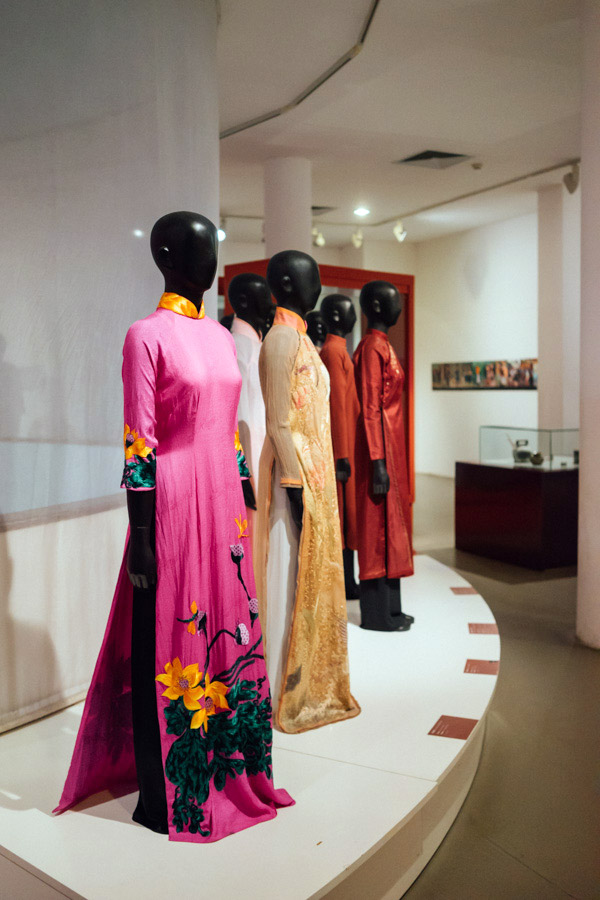
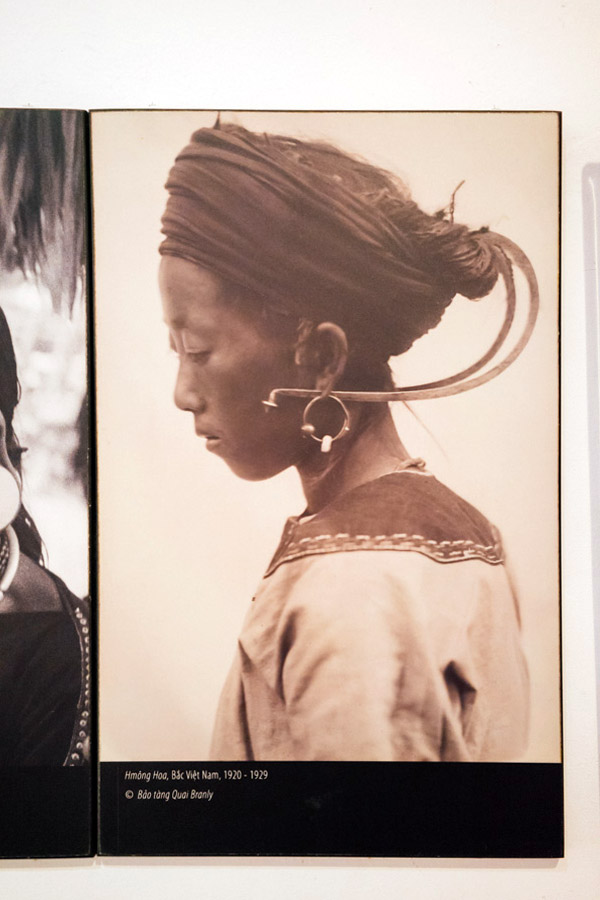

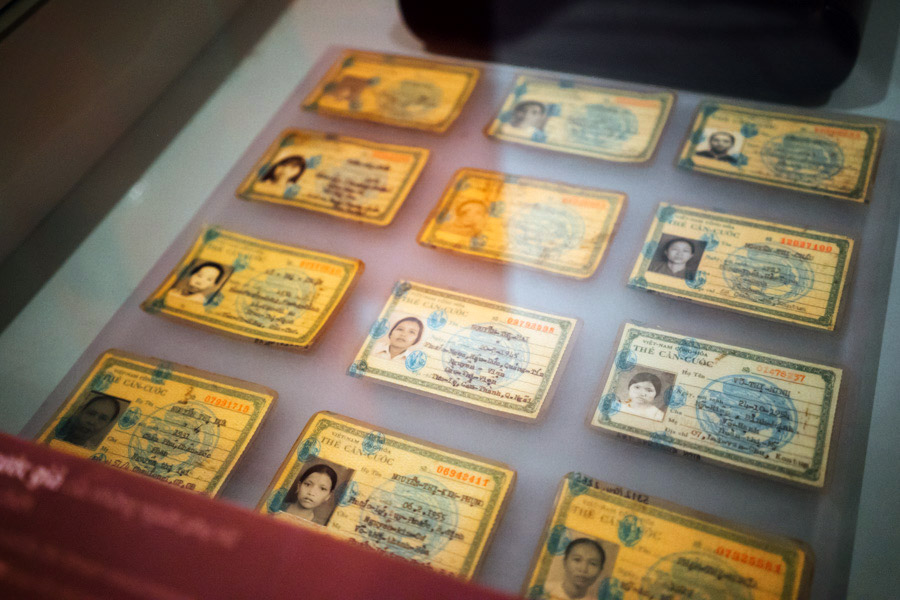
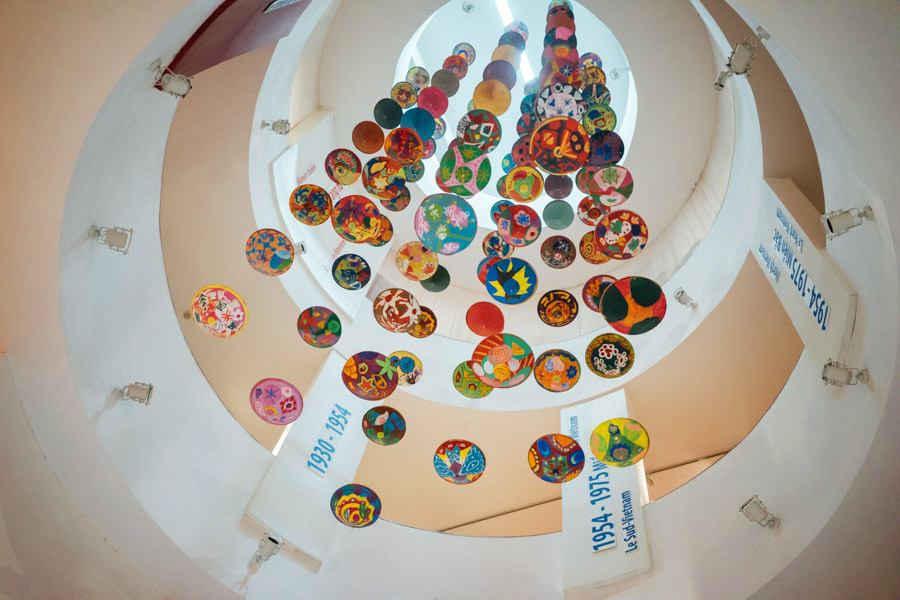

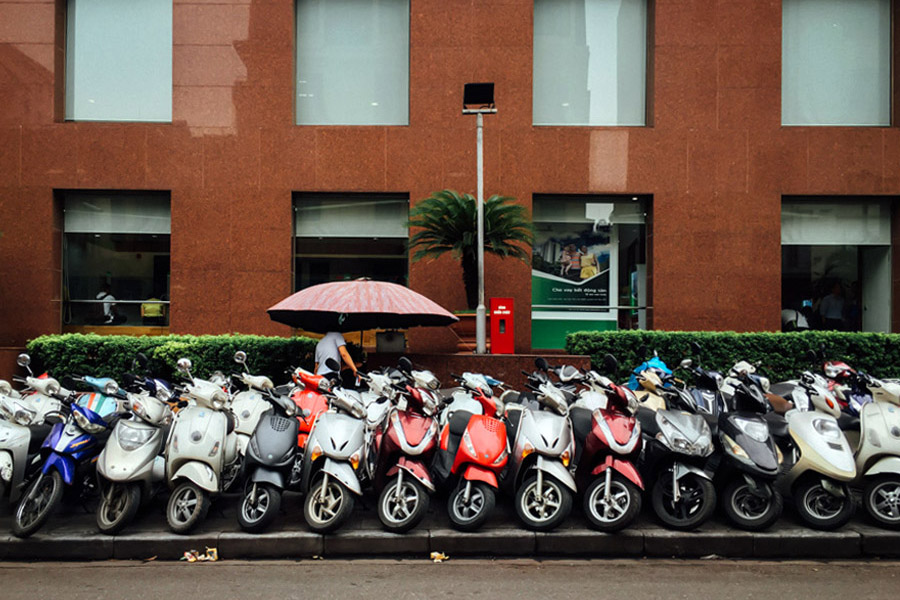
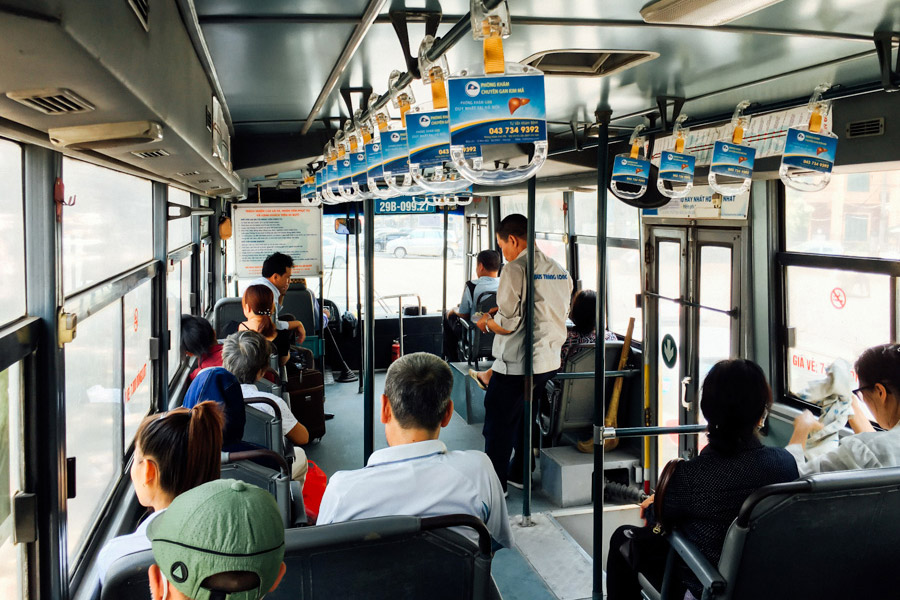


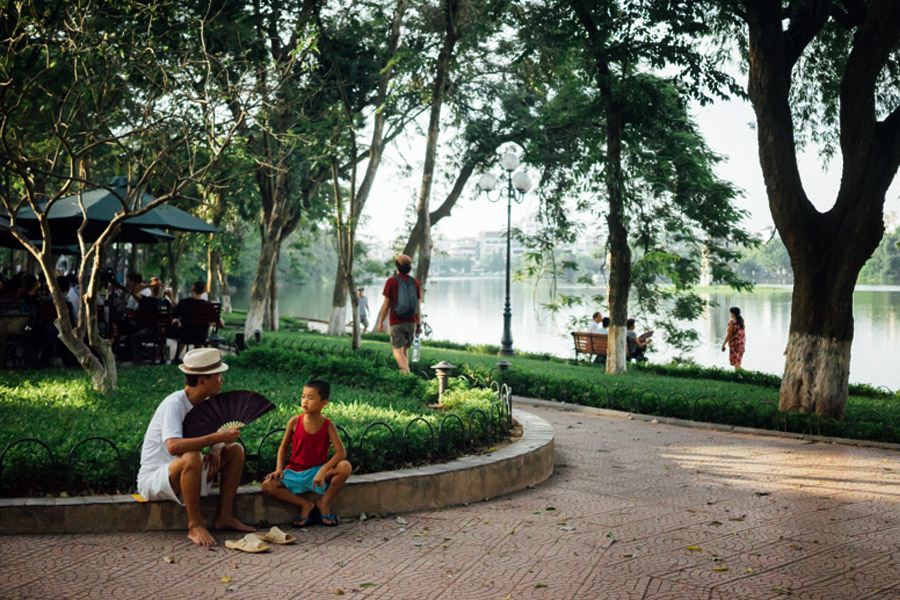
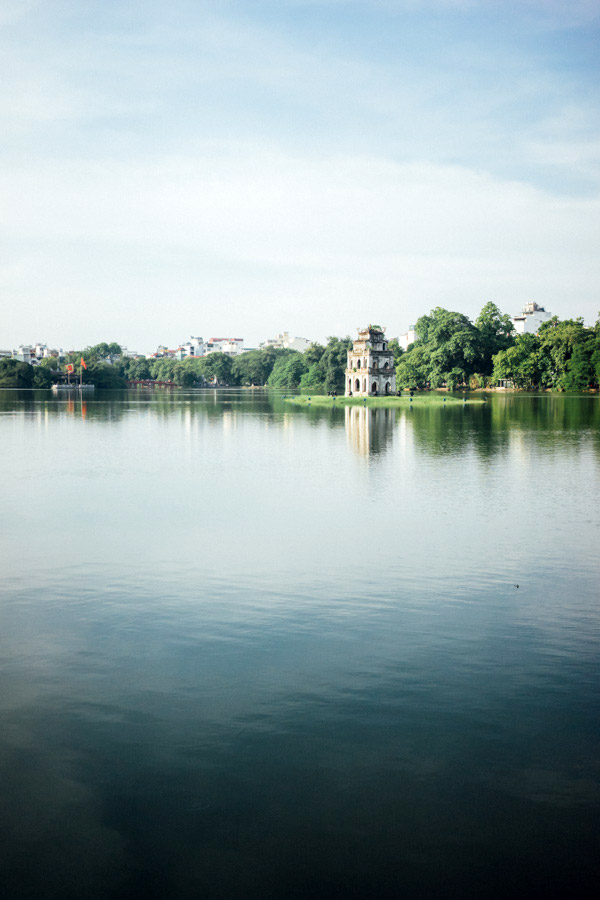
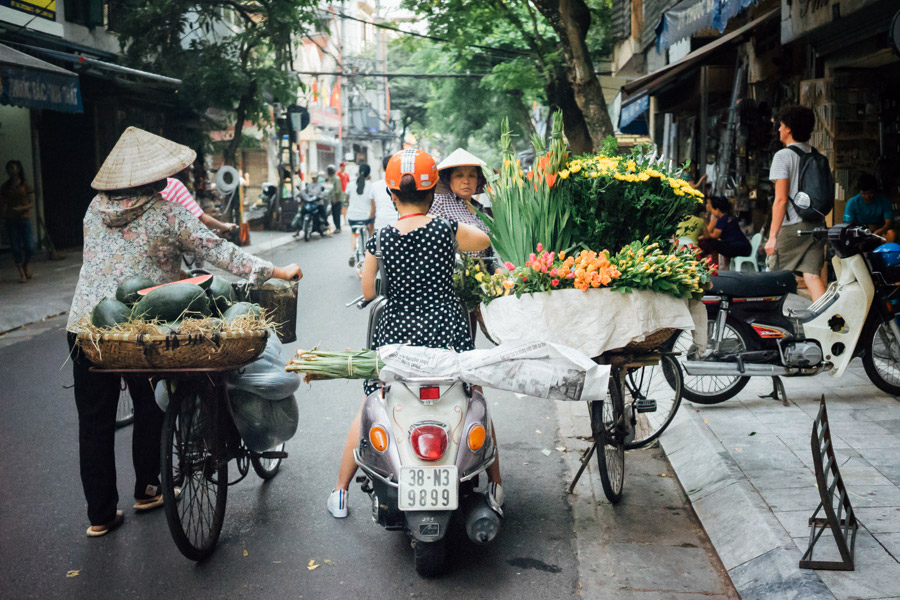
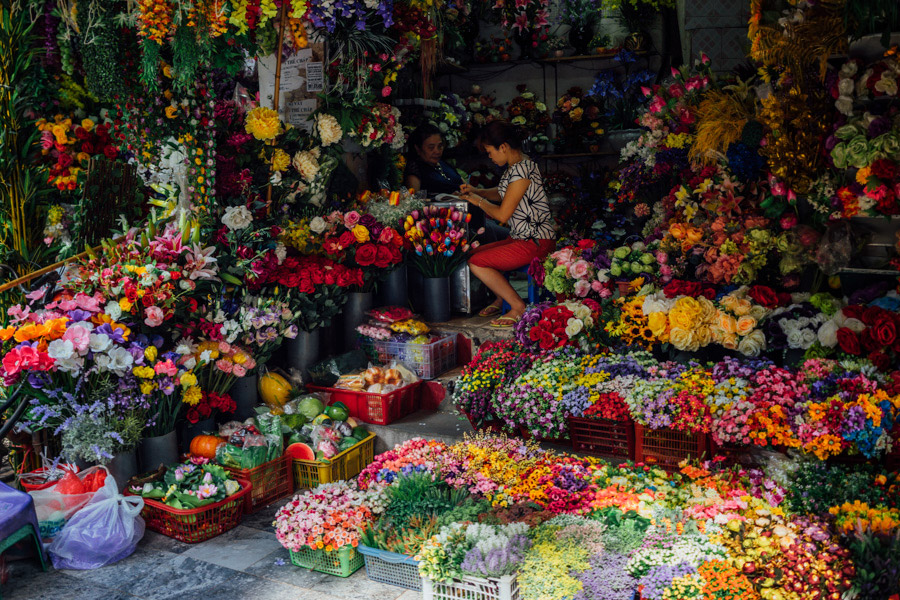
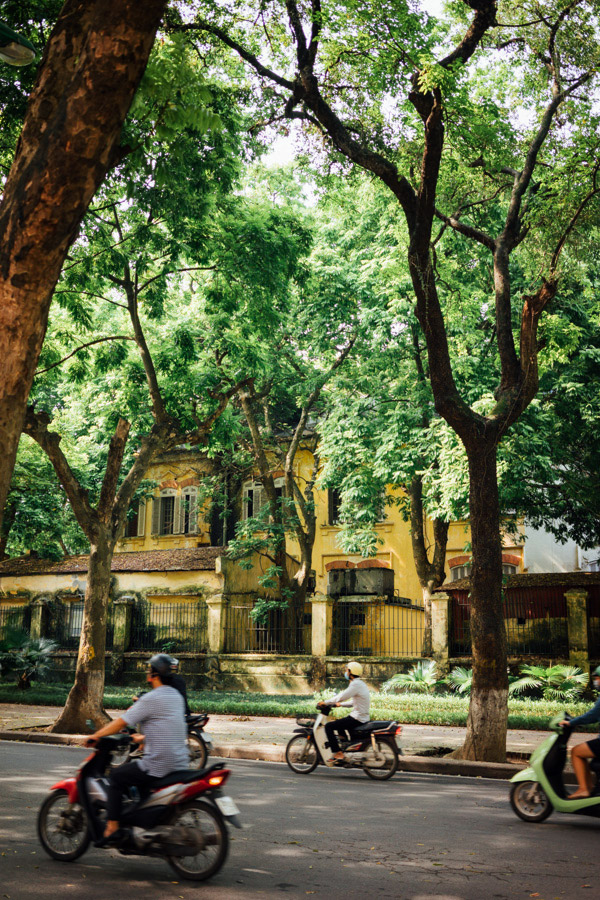

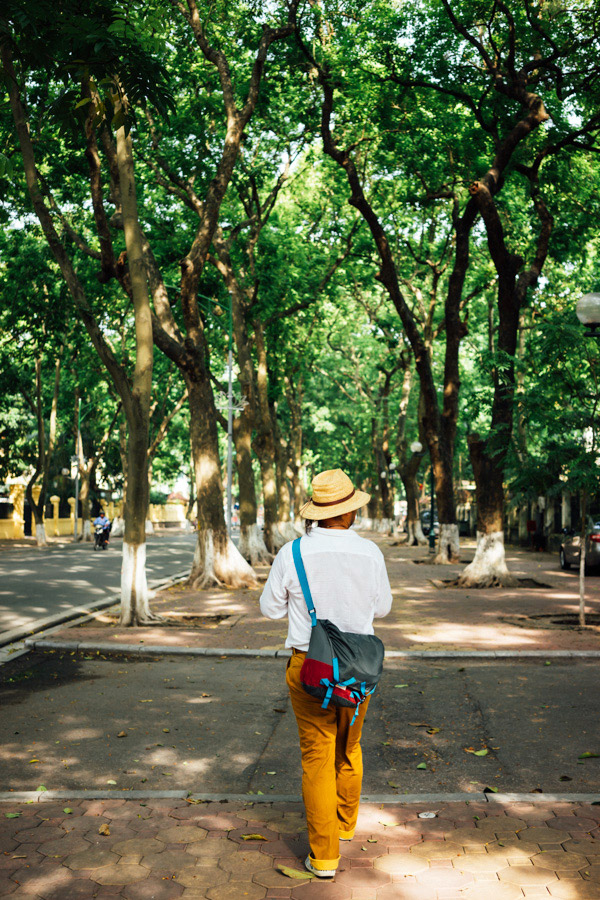
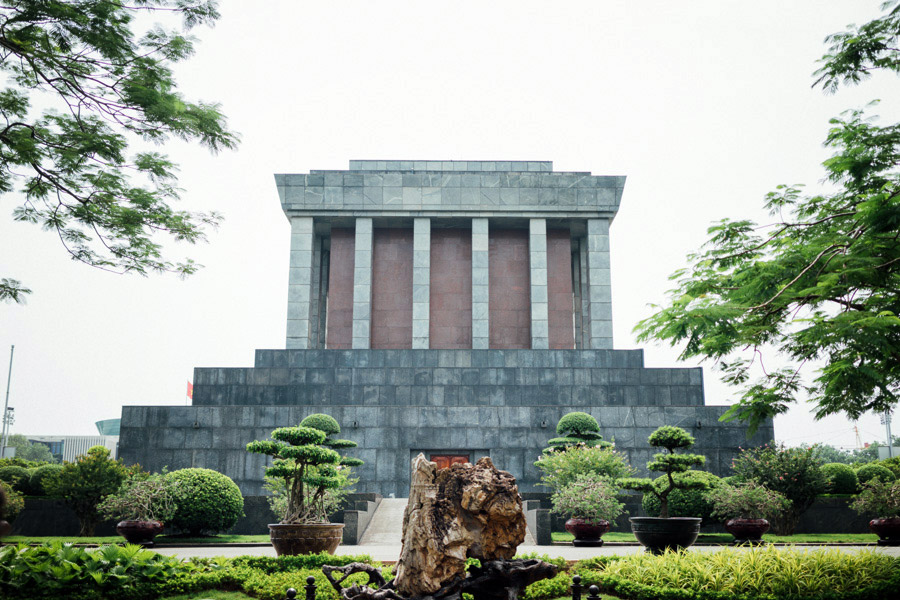

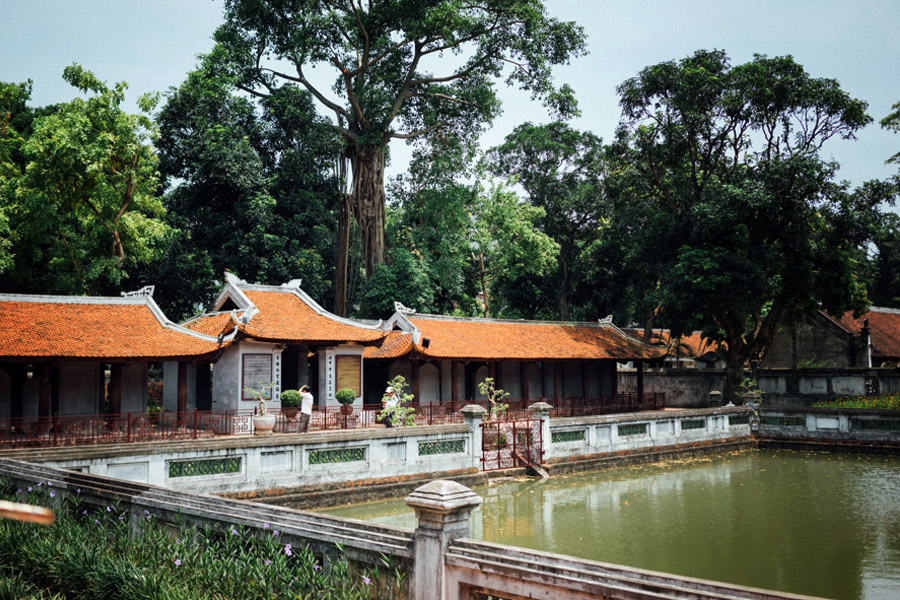


Links
We went from Hoi An to Hanoi, traveling for eight days total on a shuttle bus and train, both very comfortable. Bus tickets can usually be arranged with your hotel for a nominal fee. We booked the train ticket online (www.seat61.com is always the best resource when it comes to train rides in any country).
- Hoi An is a 10-hour night bus from Nha Trang. It’s a beautiful town no one should miss if visiting this part of Vietnam - Joe’s favorite spot! The main attraction there is simply to visit the old city. Buy a ticket at the counter on the outskirts to get five entries to the temples, community houses or other main sites. We stayed at the Heritage Homestay, a 5-minute walk away from all the action. And just outside Hoi An, on the way to Da Nang, is a popular site called Marble Mountains. Our shuttle bus to Huế stopped for 90 minutes so we could check it out.
- Huế is home to the Imperial City and the many tombs of past emperors of Vietnam. You can find many cheap tours for $7-9 (ask your hotel). The Imperial City is a fixed price for foreigners at the entrance. Don’t give in to the touts.
- Hanoi is, of course, the capital of Vietnam. The Ho Chi Minh Mausoleum is the main attraction, but it is also the starting point for Ha Long Bay (which we skipped), Sapa (our next destination) or going South. Our night train from Huế to Hanoi was a 10-12 hour comfortable ride. Bring your own dinner, or package of noodles (hot water is available on all trains in Vietnam).
We missed two major sites (we like to leave things to come back to):
- The Phong Nha-Kẻ Bàng National Park, home to the famed Phong Nha and Paradise caves. We were, however, told that these places are very crowded during the time. For a less busy but more difficult experience, we were recommended the Tu Lan caves.
- The Demilitarized Zone is just North of Huế and worth visiting if you have the time.

















